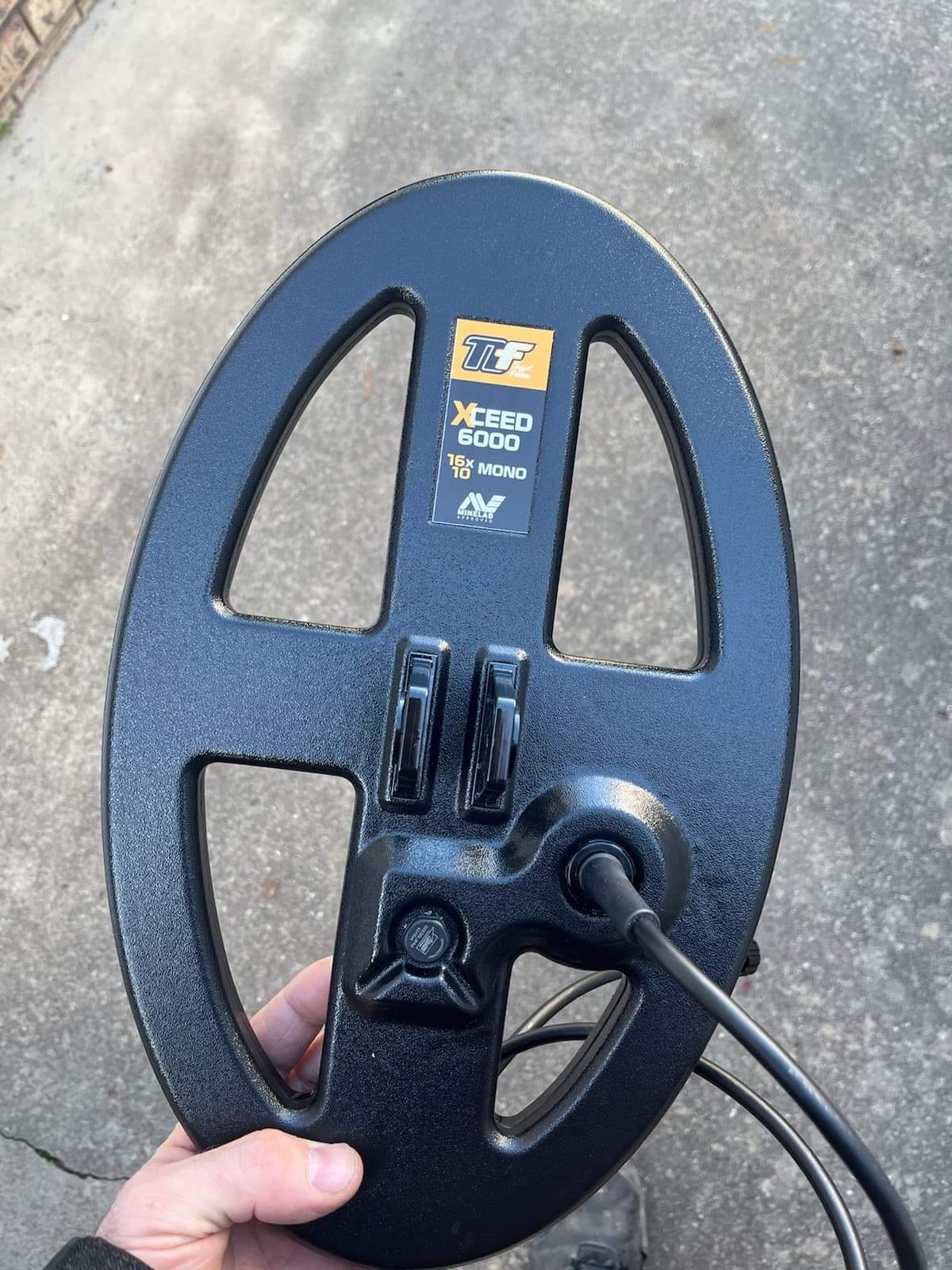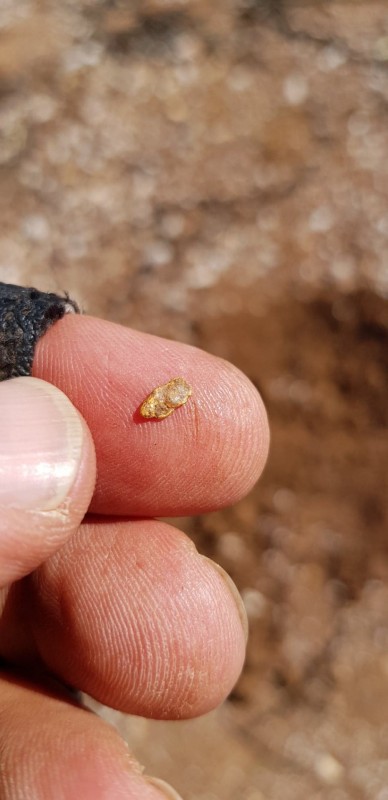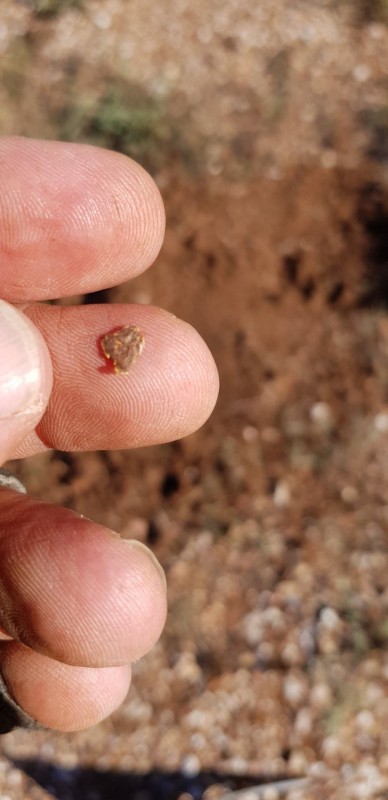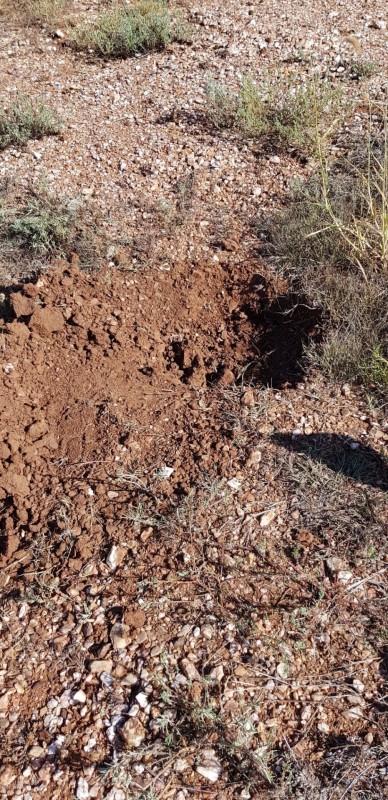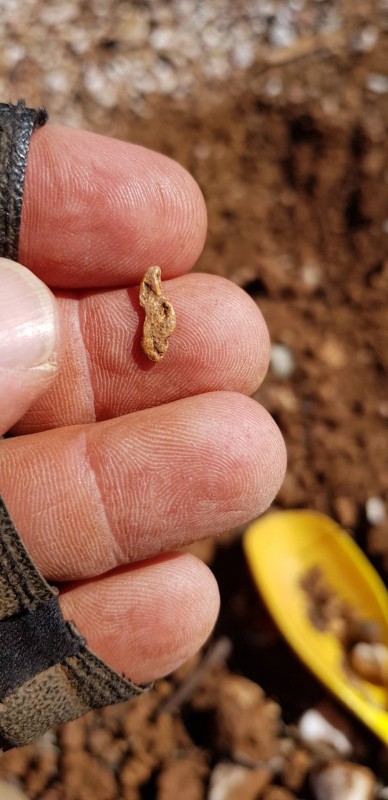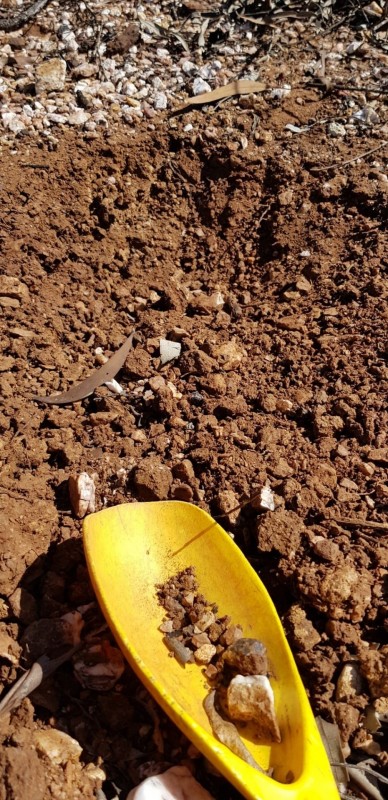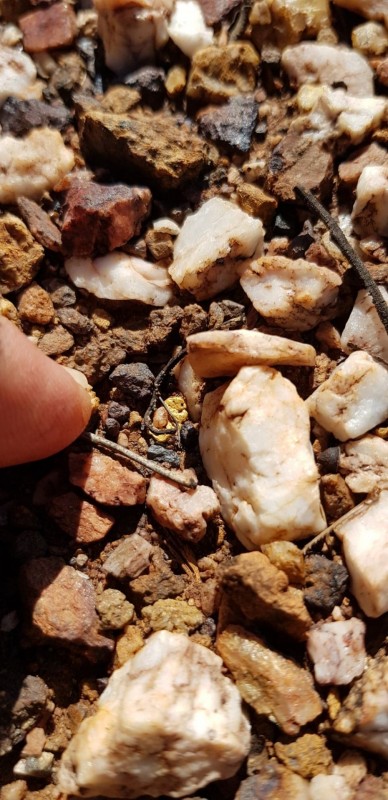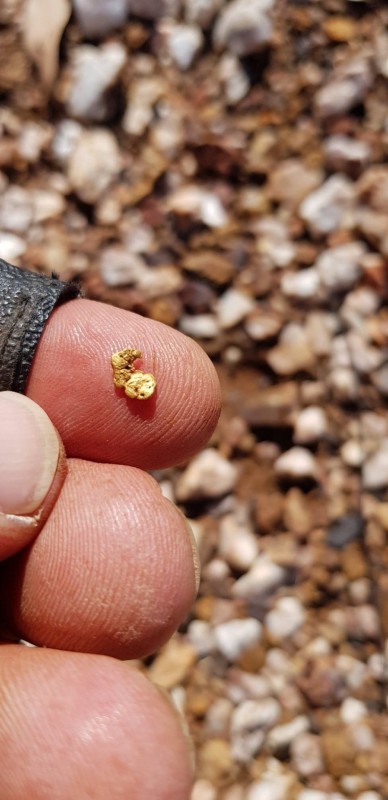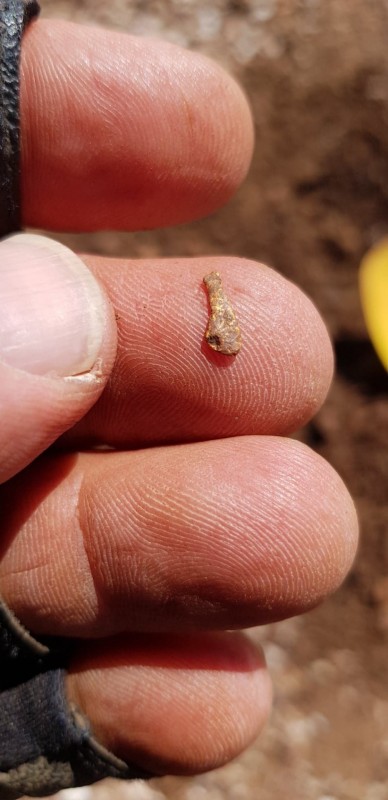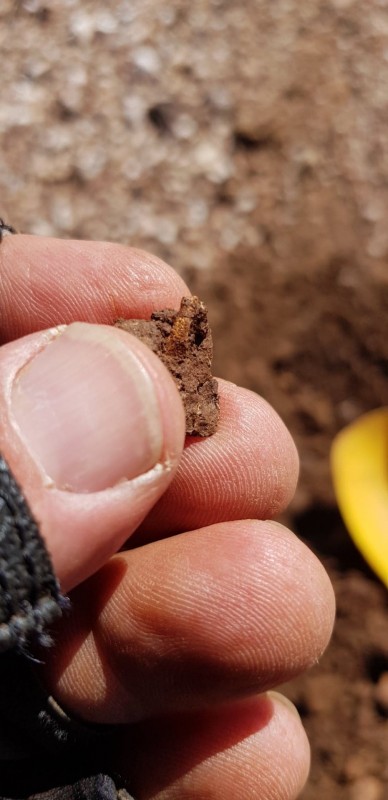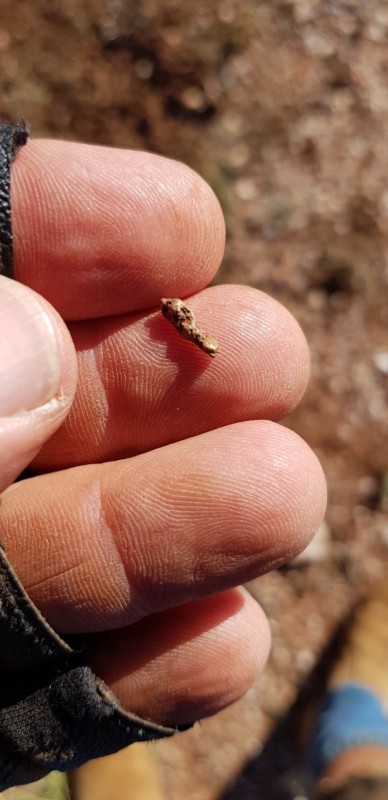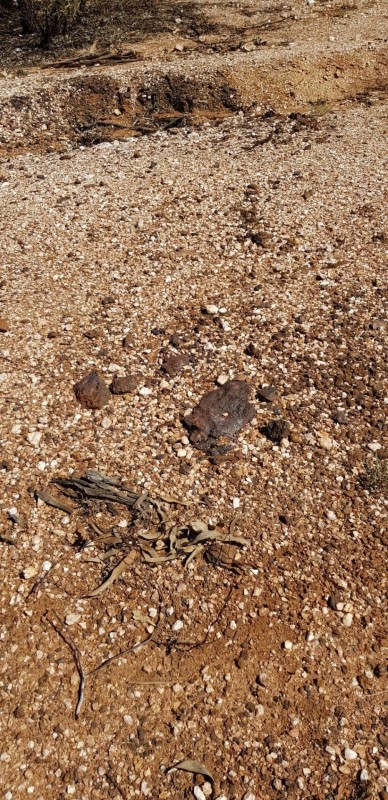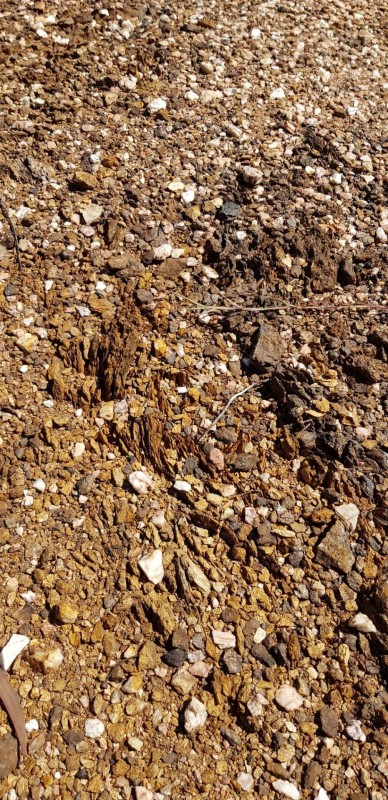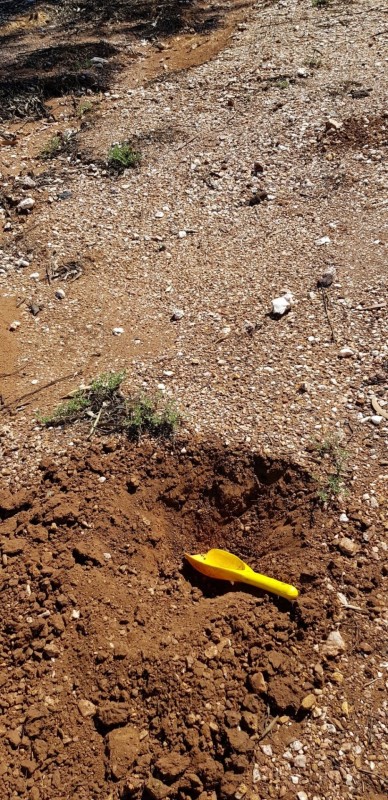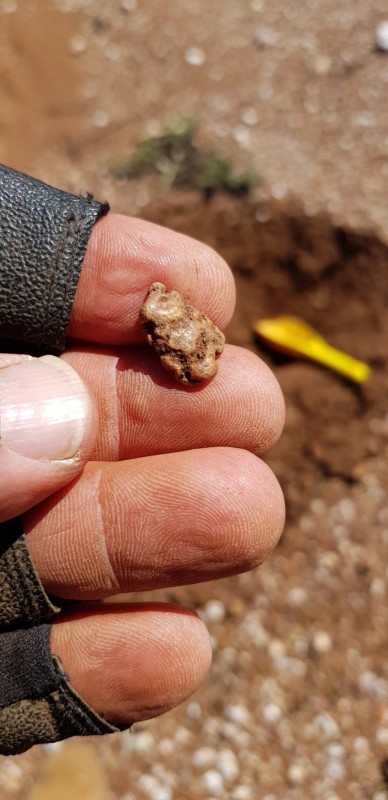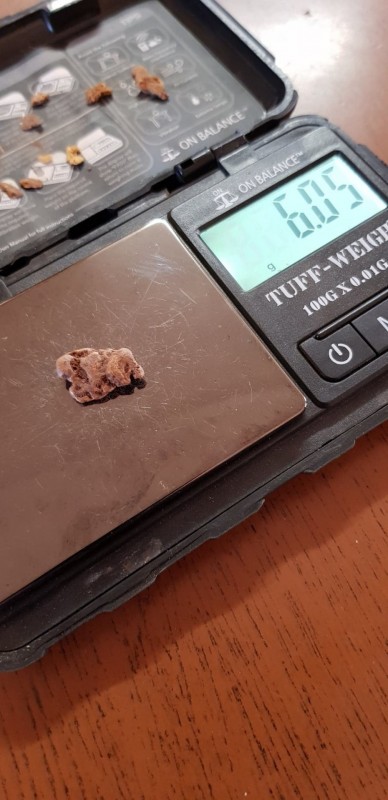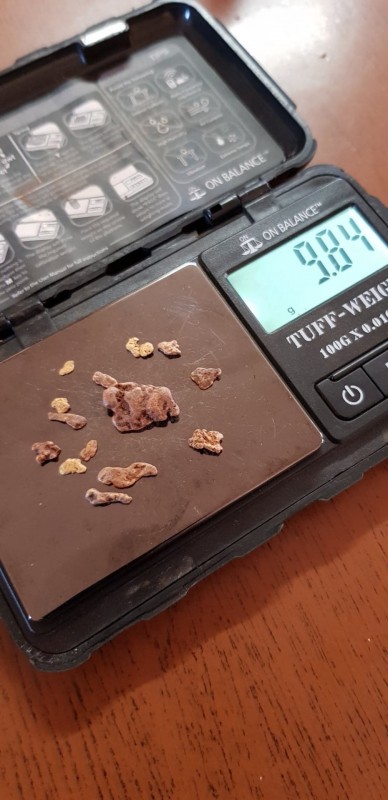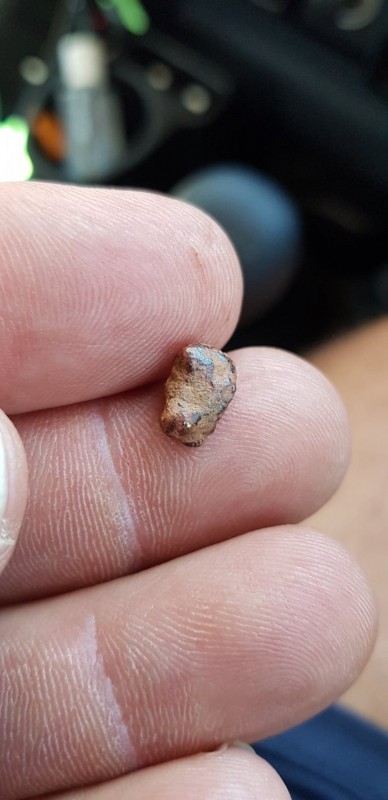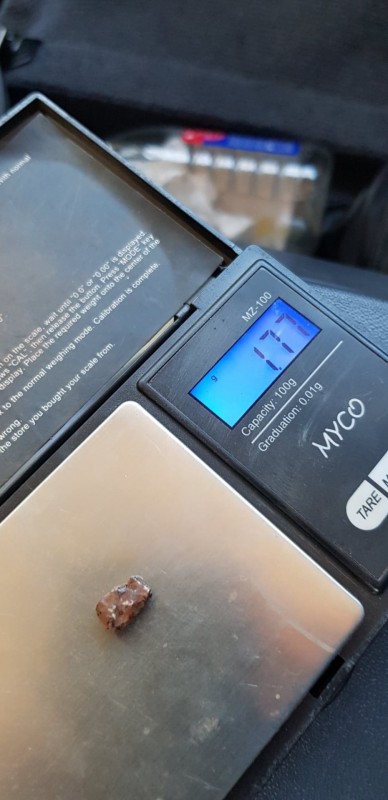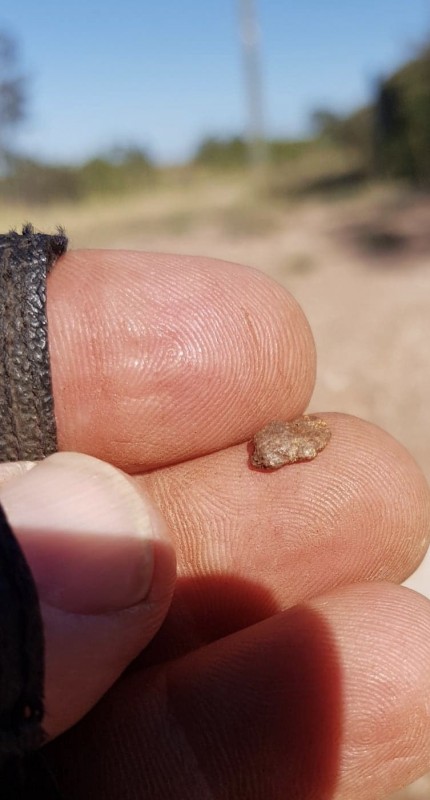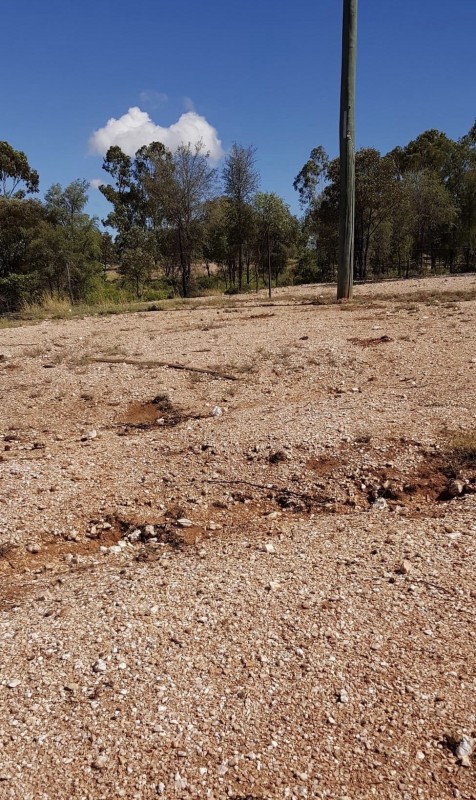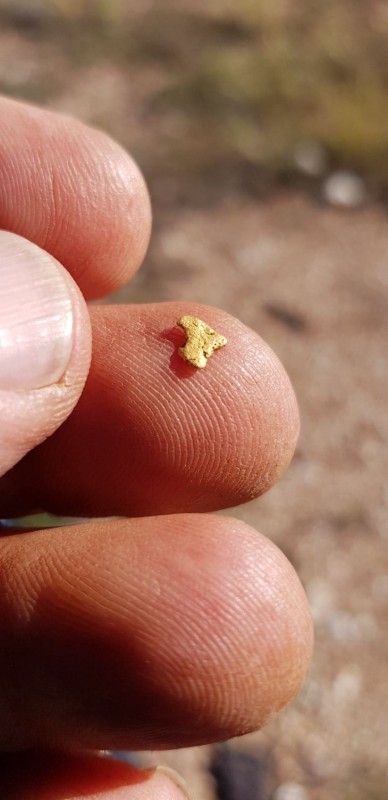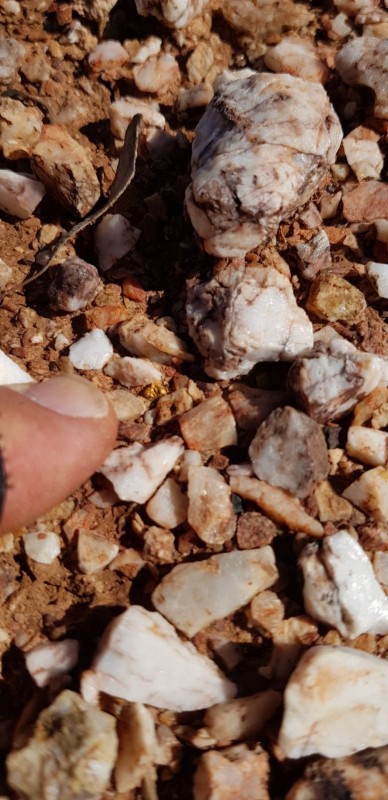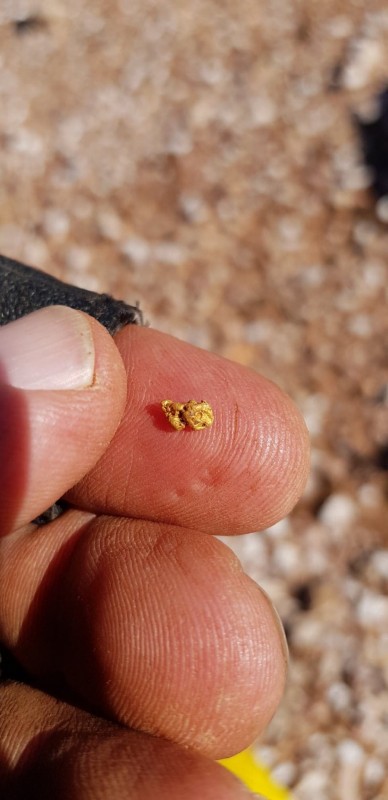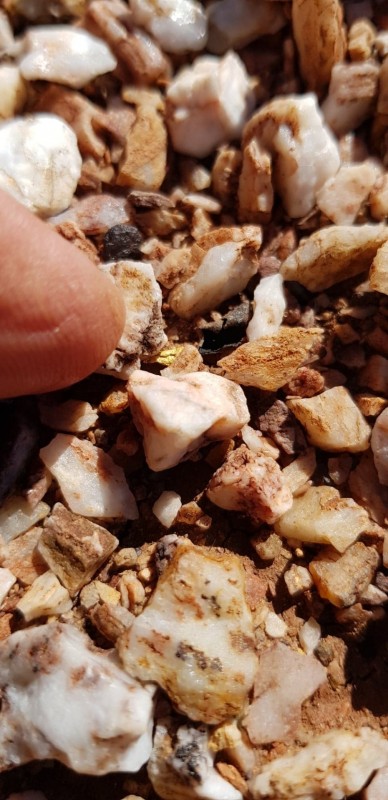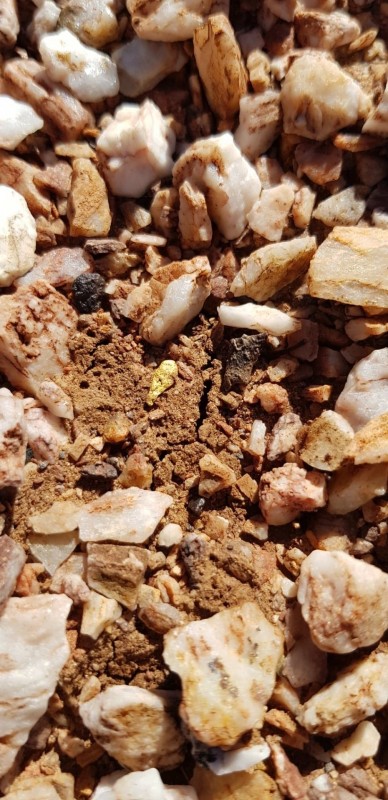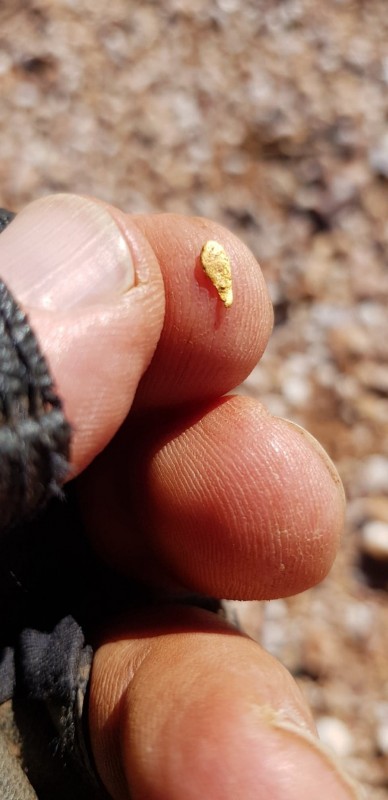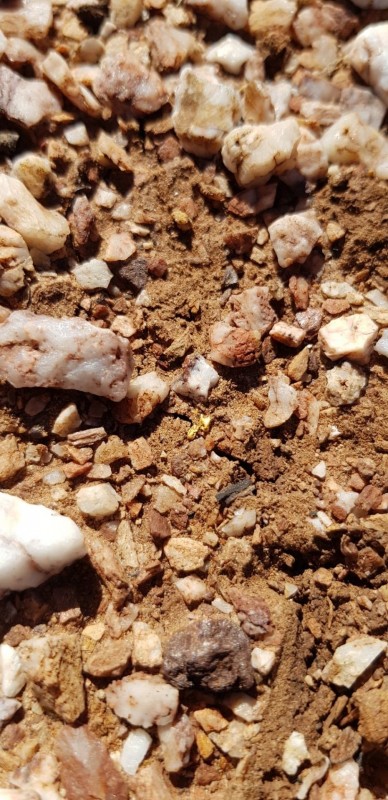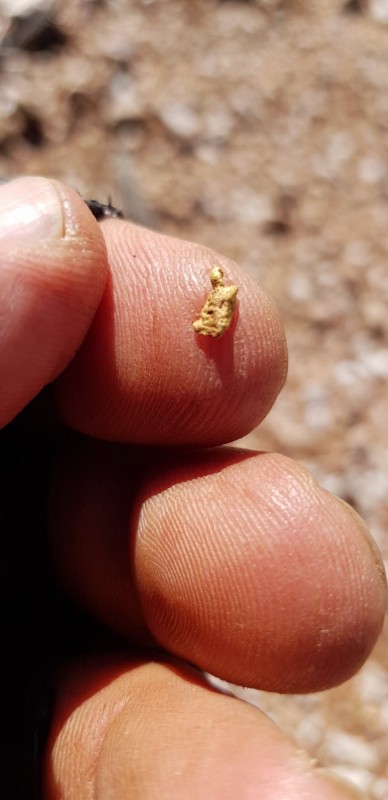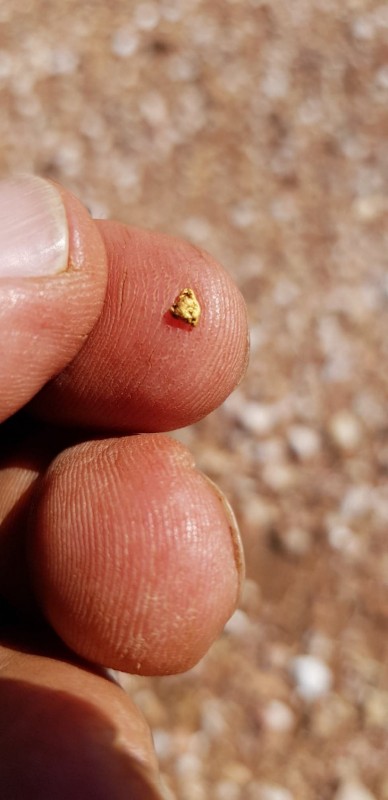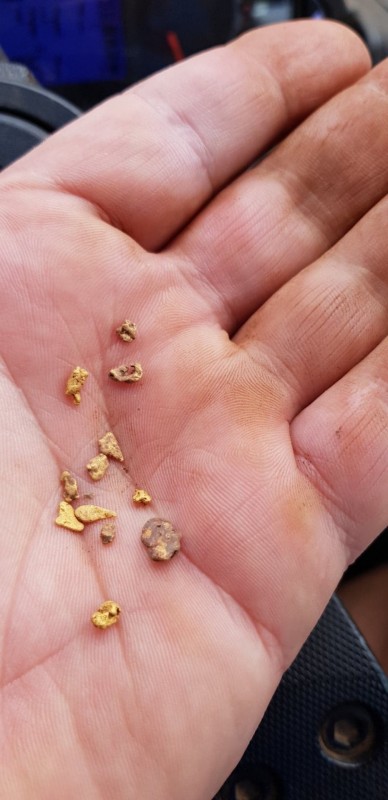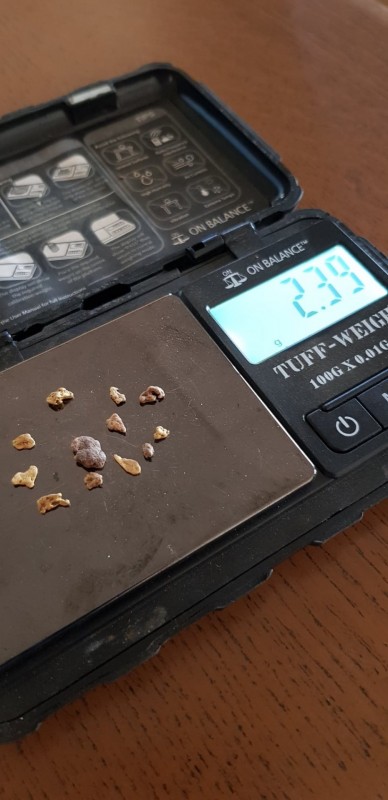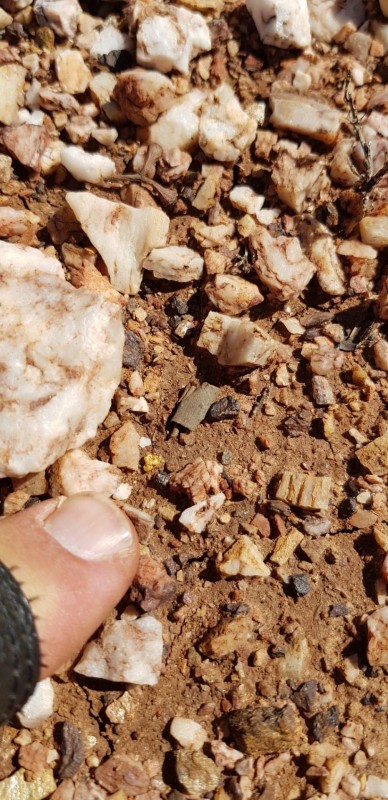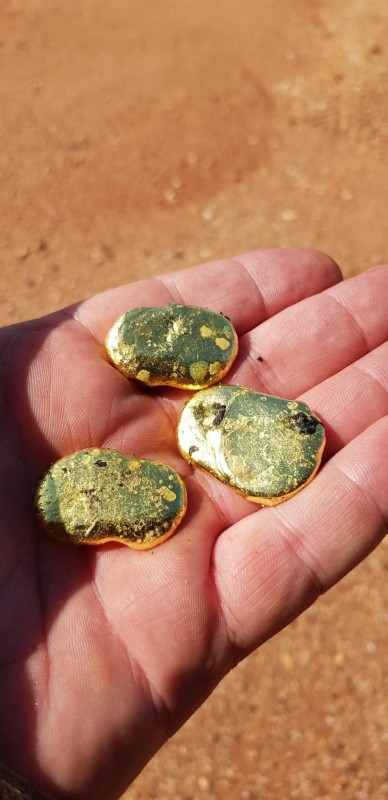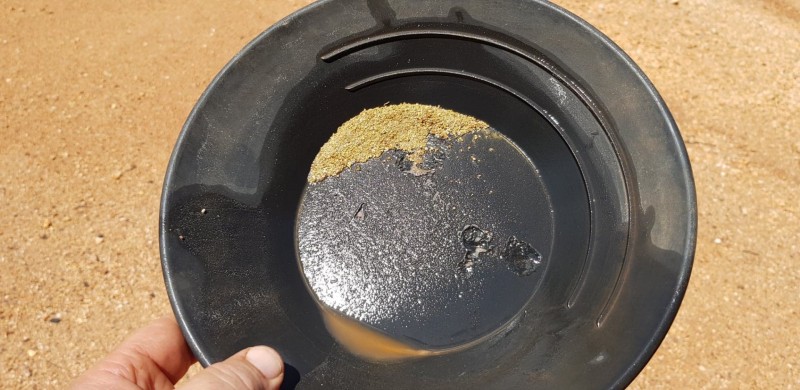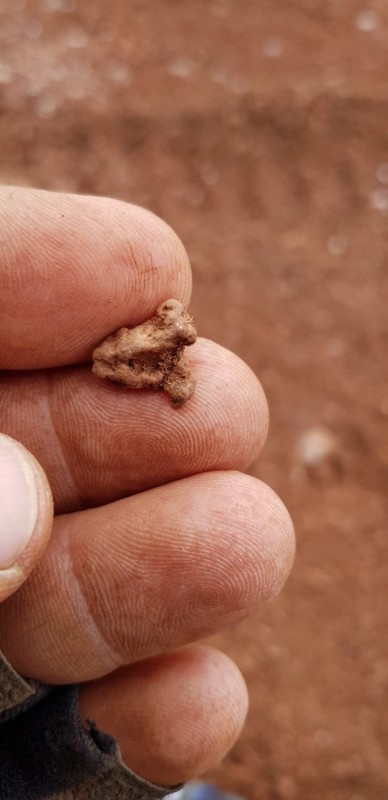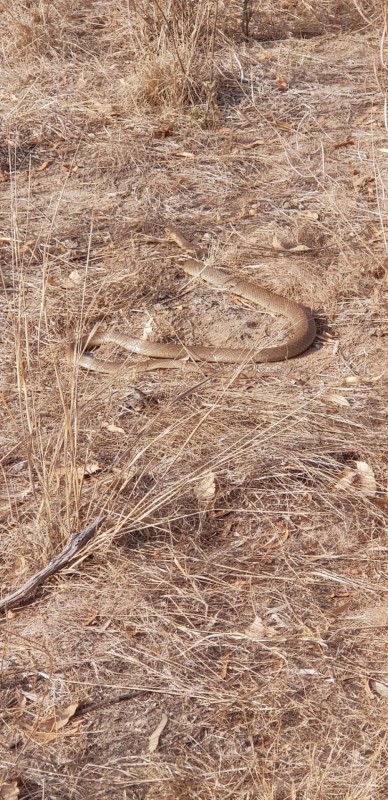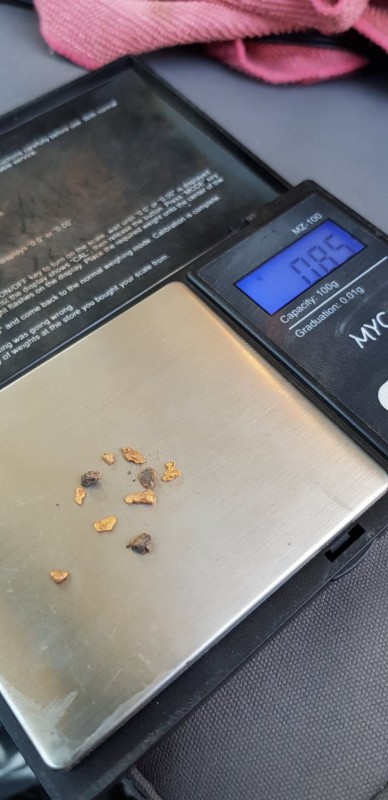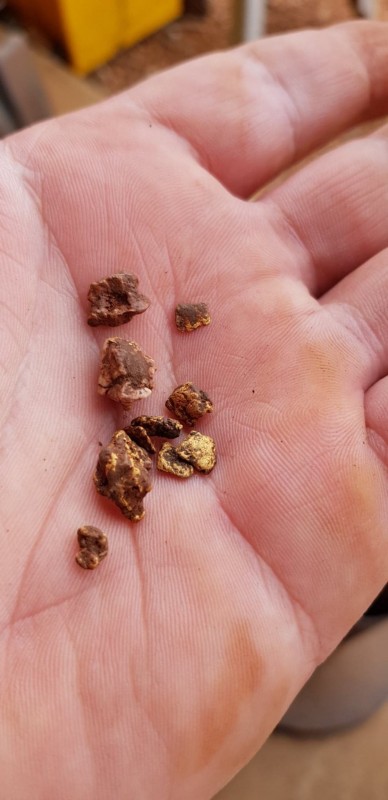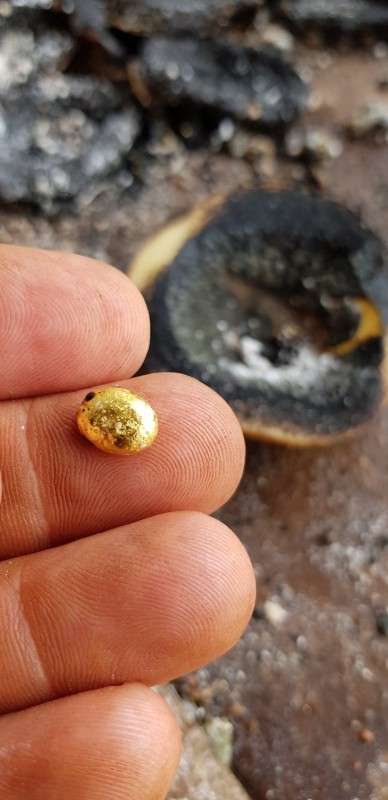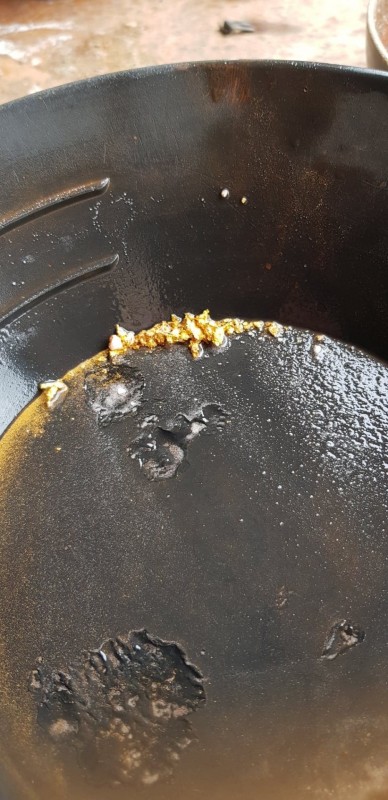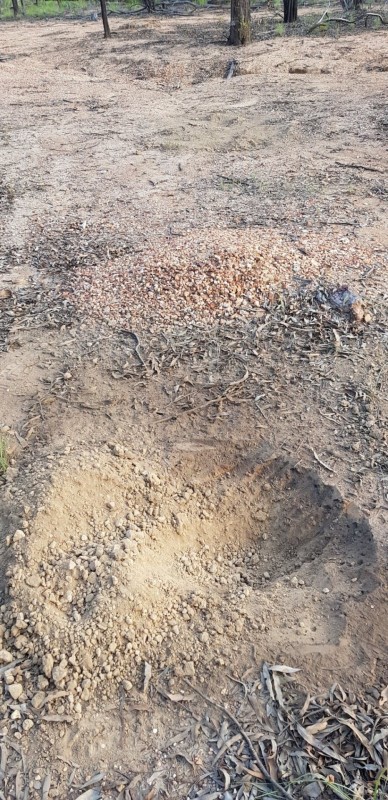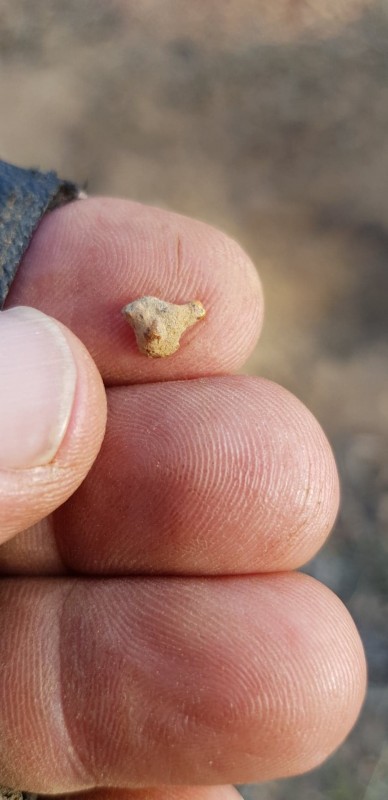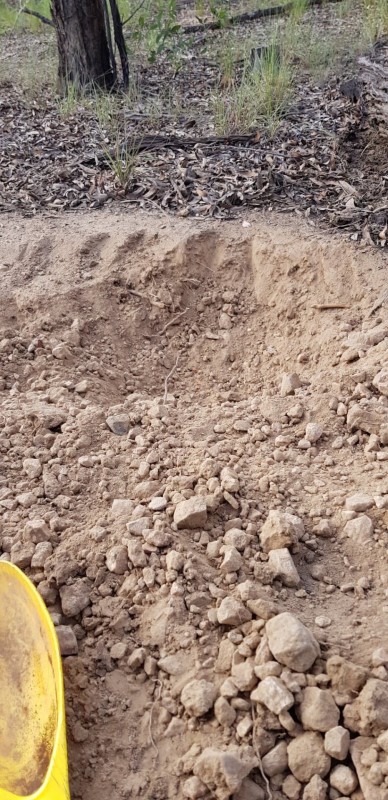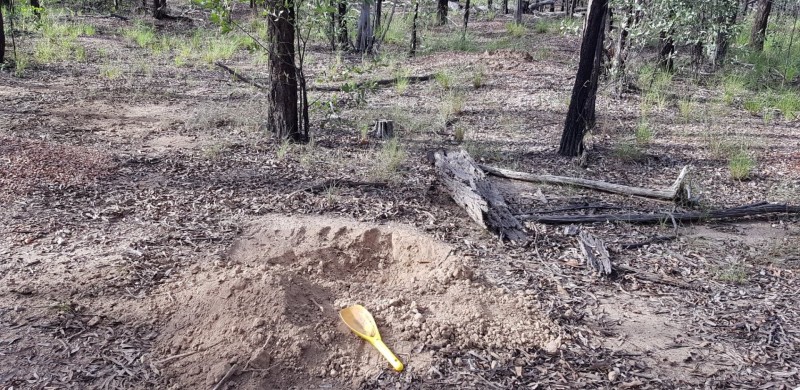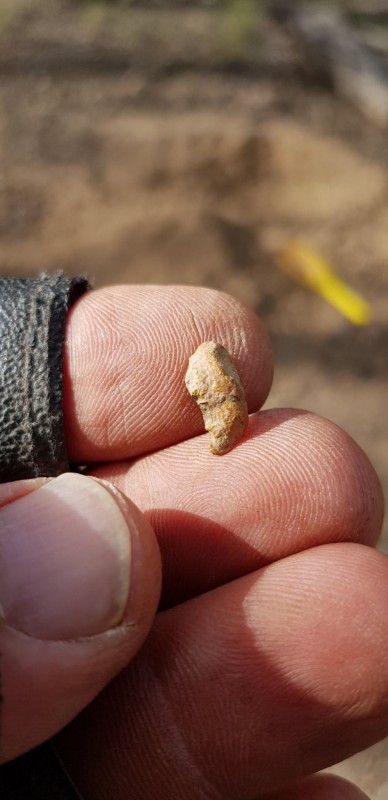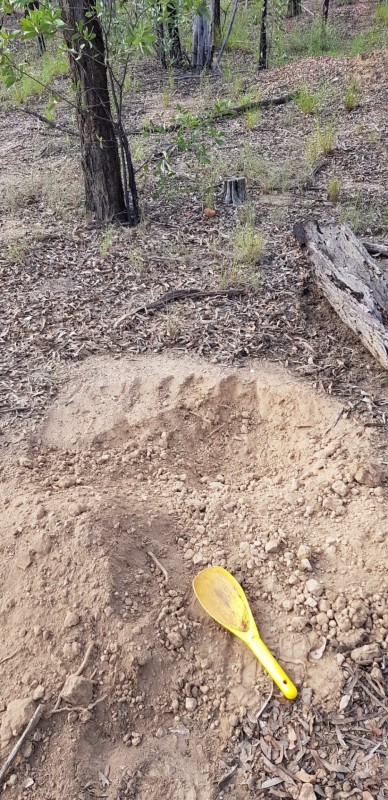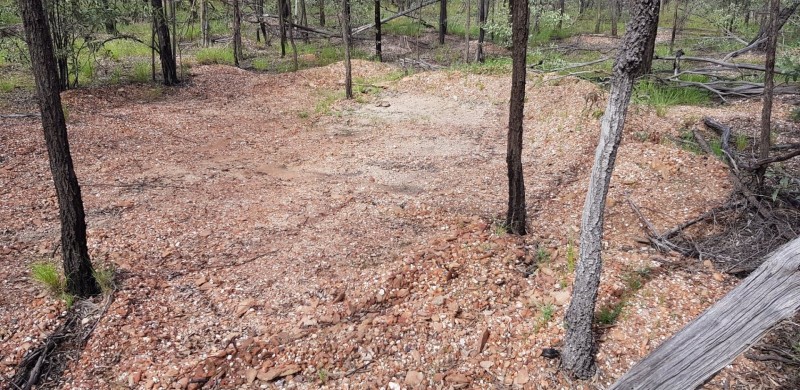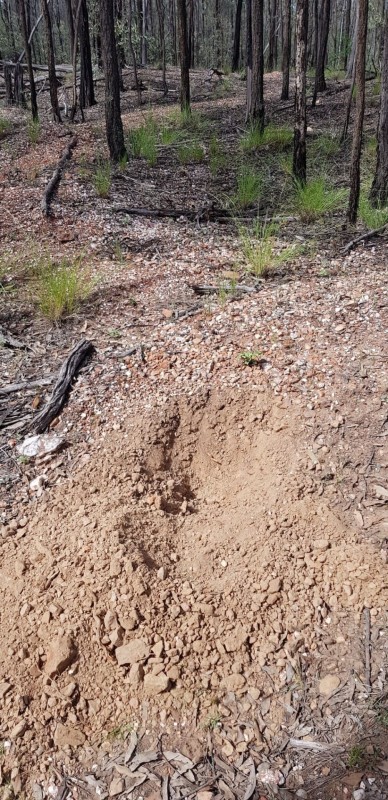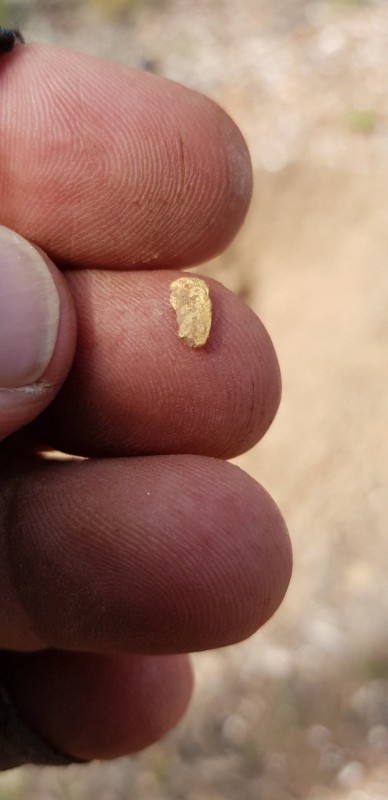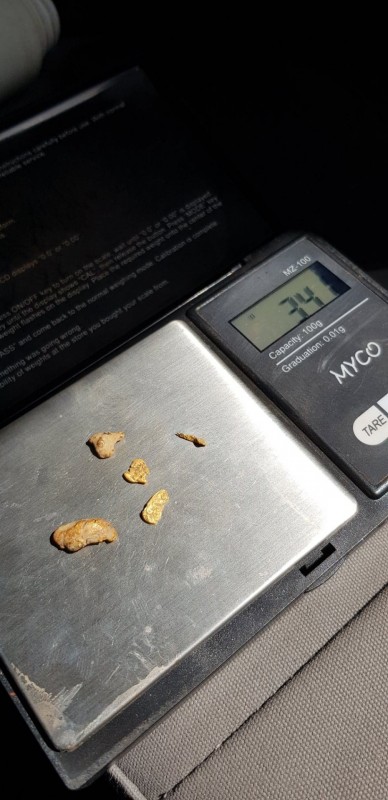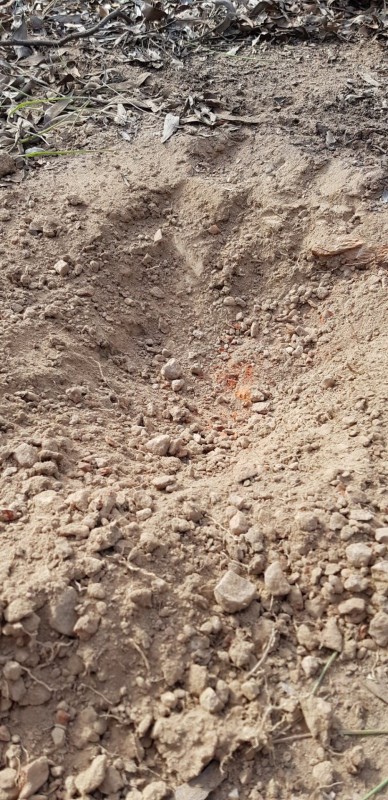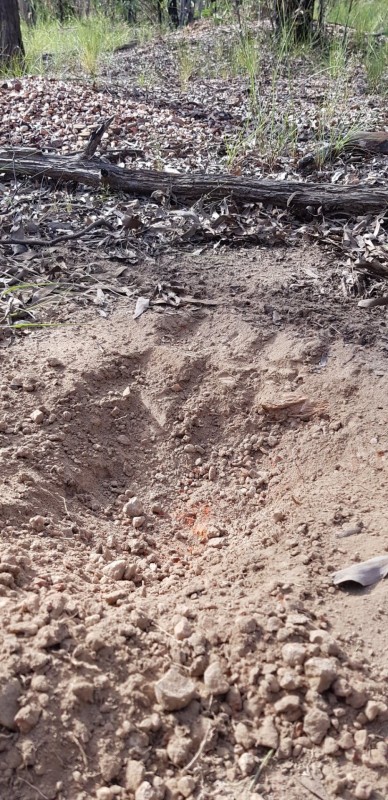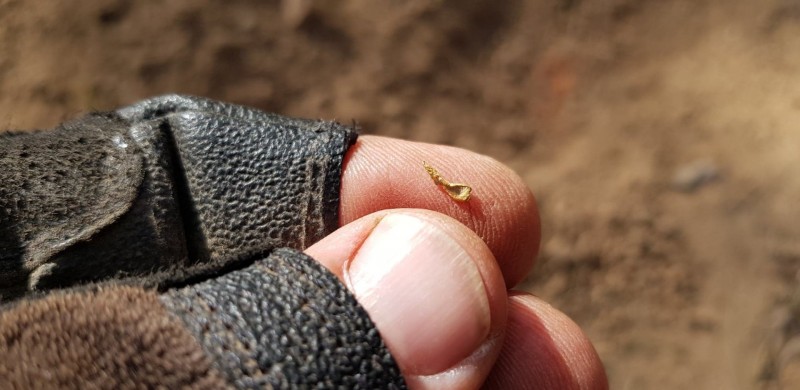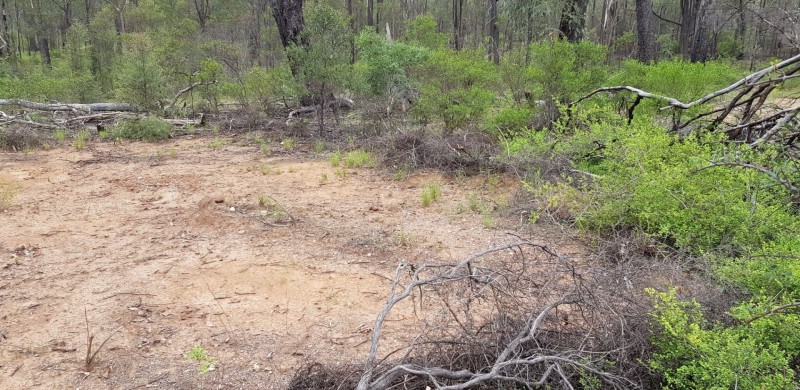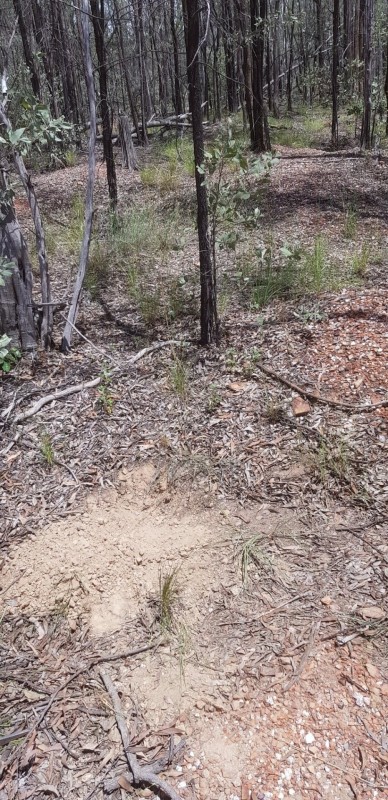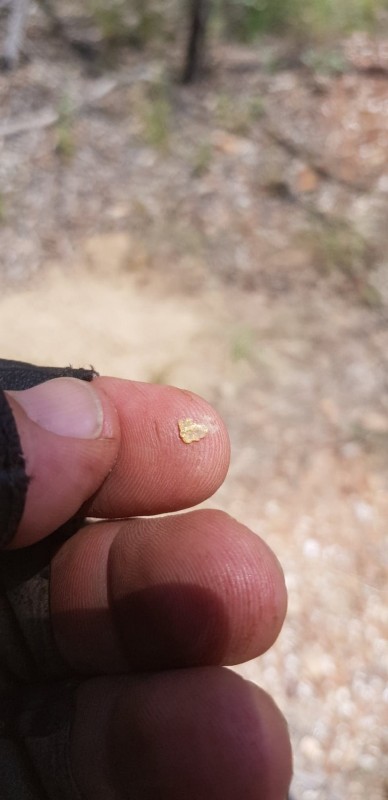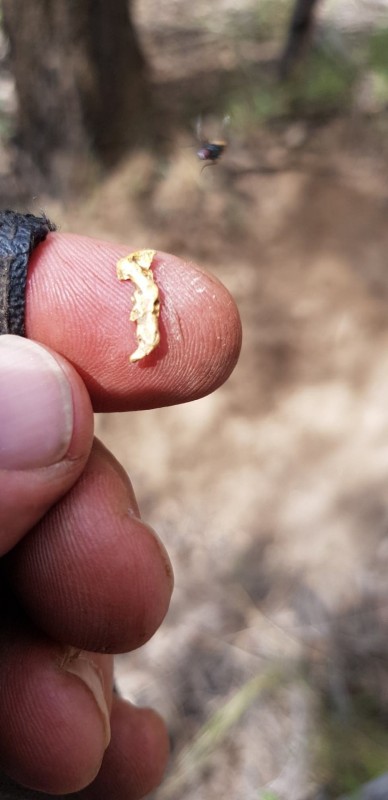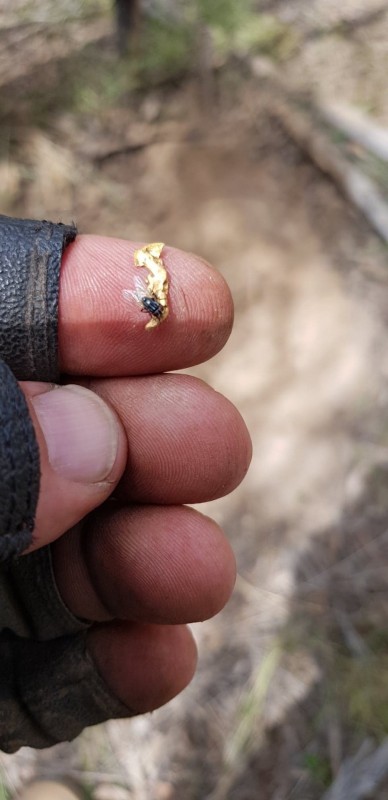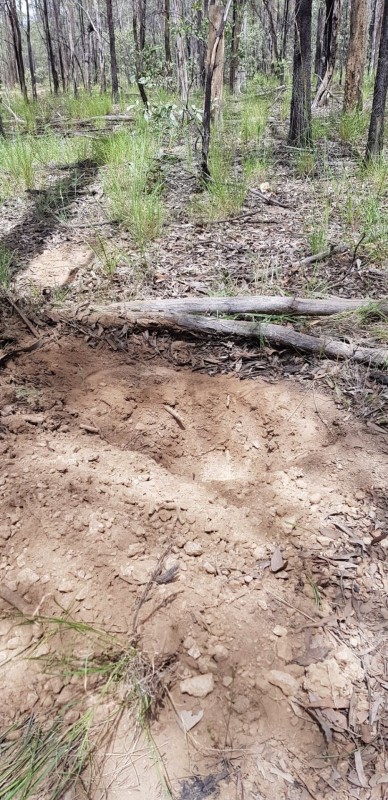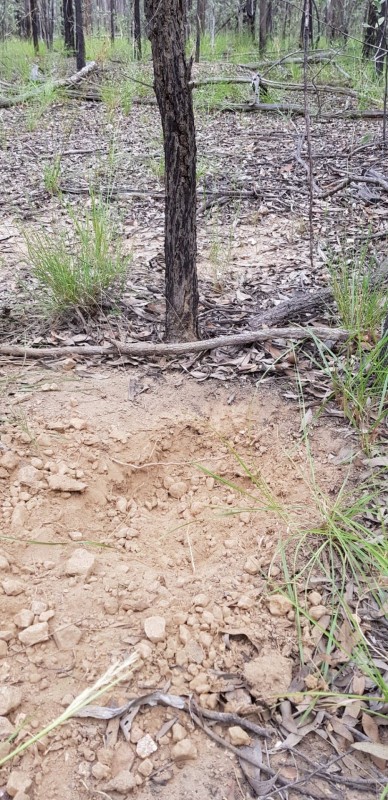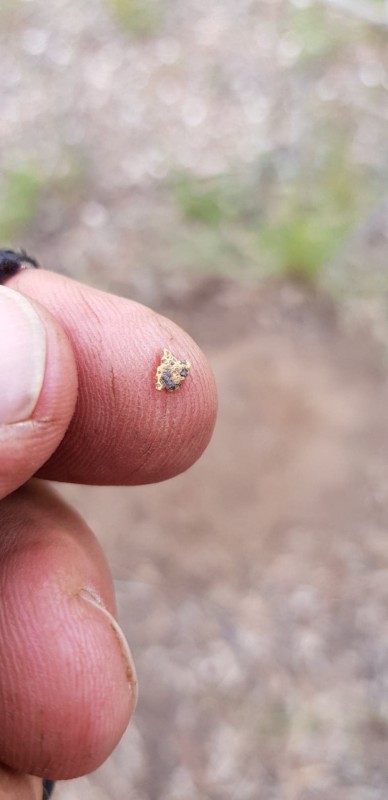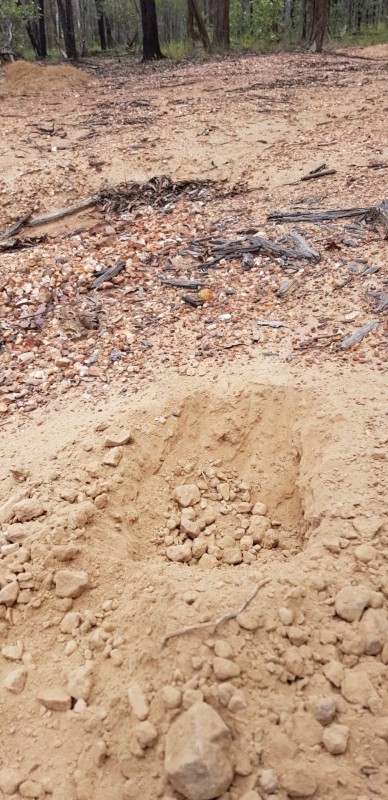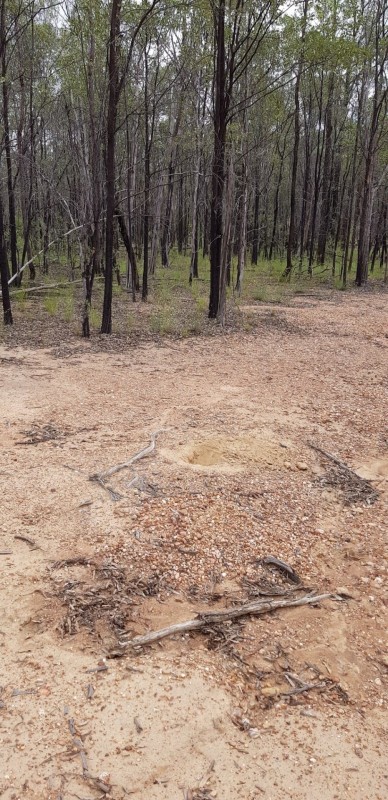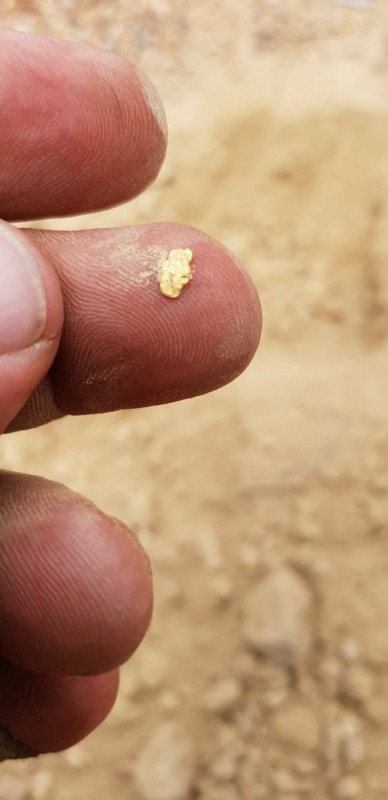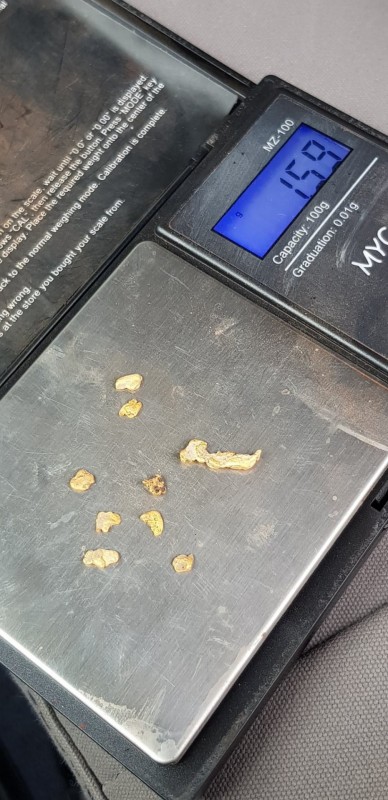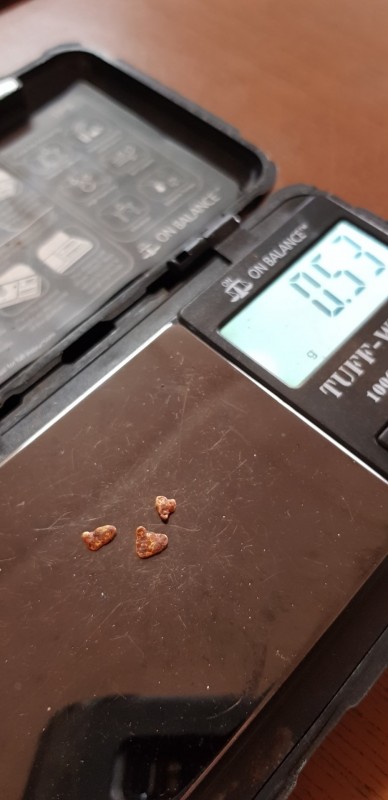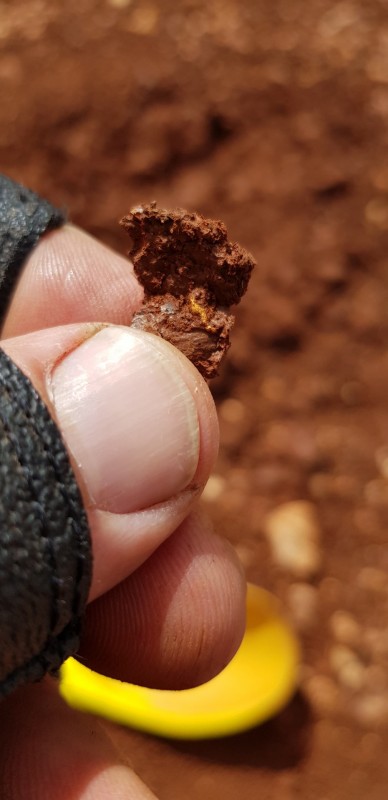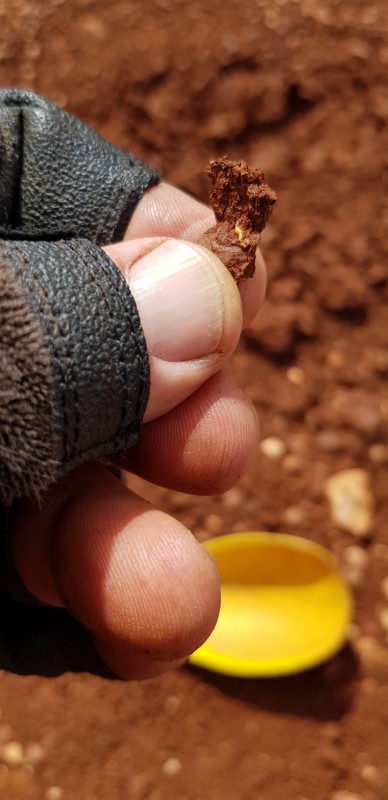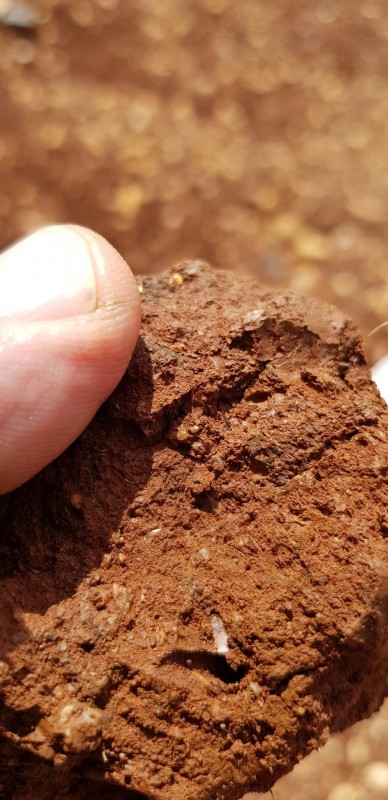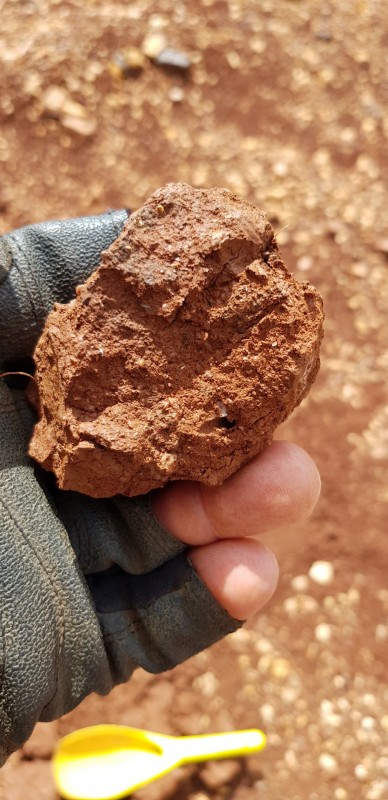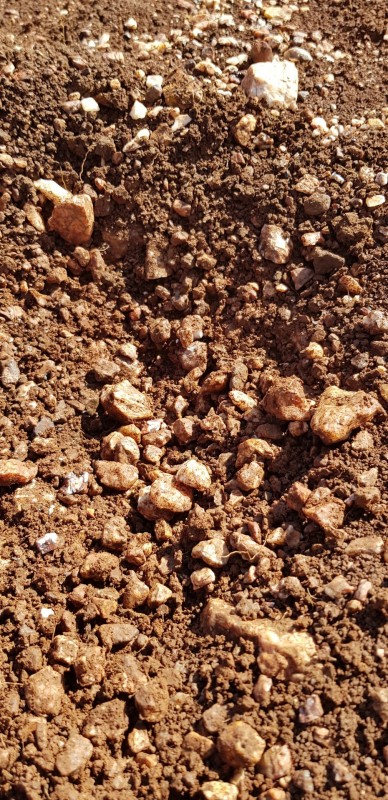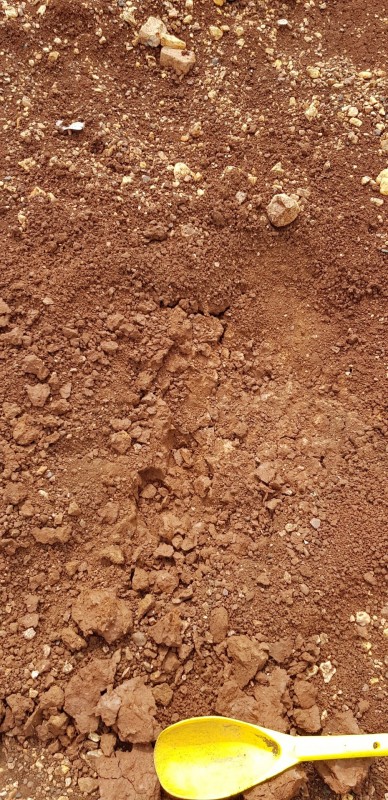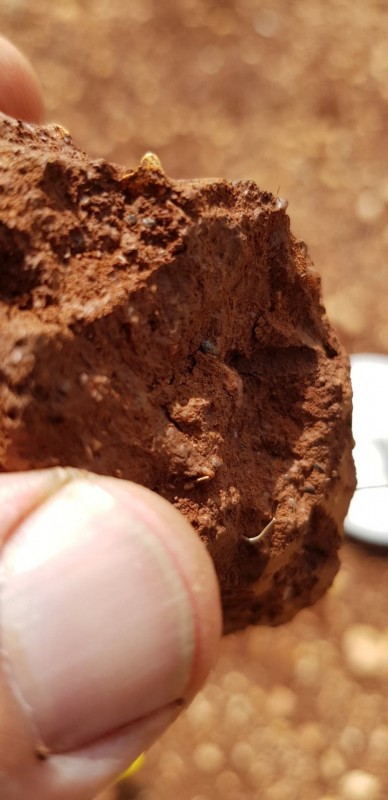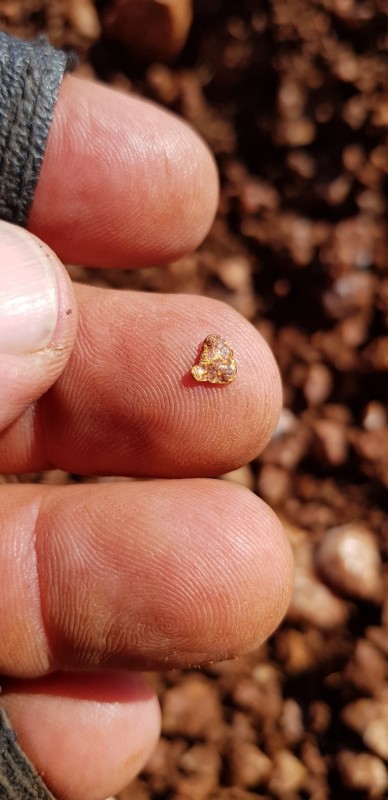-
Posts
1,084 -
Joined
-
Last visited
Content Type
Forums
Detector Prospector Home
Detector Database
Downloads
Everything posted by Jonathan Porter
-
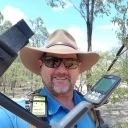
Jp’s Audio Visual Gold Thread
Jonathan Porter replied to Jonathan Porter's topic in Detector Prospector Forum
Here’s some comparison audio of a typical initial gold signal response compared to when some soil has been removed, the second I hit this target I knew it was gold, it had a mellowness to it. The GPZ is not a sharp machine (which I love), so requires input from the operator to get target signals to stand out from the threshold. To my ear this one was an obvious signal that yelled gold right from the start, it was well rounded, had a decent amount of range of motion required to manifest properly and it sounded buried. If I get a subtle repeatable signal and it doesn’t improve a lot when surface clutter is removed I start to get excited, if it survives the next soil removal phase and still remains subtle then the excitement doubles. Buried is the key, in undisturbed ground if its buried the chances are like 80% of it being a good signal, on the surface in trashy areas its anyone’s guess. JP Note initially the signal has a slight bit of channel switching going on, a sure sign its gold. Nugget that was making the signal, finished up at about 5 inches -

Jp’s Audio Visual Gold Thread
Jonathan Porter replied to Jonathan Porter's topic in Detector Prospector Forum
I’m not sure what you mean by no threshold, in your example are you lowering the volume till you only hear the louder responses? I listen to the audio as a whole which is mainly threshold with natural variations dependant on localised variability then within that information I am specifically listening for a smooth lead in and tail out response that is repeatable, the High/How ones are more obvious but the Low/High are the pay day ones. The key is a broad change in pitch response that peaks above threshold volume then tails out back to threshold pitch and volume. In both audio samples you can hear that quite clearly with Sample B being the MUCH more obvious response thanks to the better coil. Both samples have a degree of channel flipping going on, a sure sign of a piece of gold being present in natural terrain. Threshold and Threshold pitch are VERY important, 27 on the GPZ compliments the Audio Smoothing OFF mode, all my other settings defer to that. Threshold is your reference point and should be heard at all times, this is why I use conservative settings so that the “Bitchin” signals do not dominate the scene destroying my ability to pick the subtle repeatable wide pitch change variations. More is quite often less, in most cases setting the detector up to BANG in on a target that would have been obvious anyway can go against you. So IMHO the key is having the Threshold able to be heard clearly above all things, it is the PITCH change in the threshold that you are most sensitive to, magnifying all the little dross variations in the threshold will only cause fatigue and frustration. Getting the range of physical MOTION right in relation to a suspect target by training your ear to listen through the natural threshold variations for the repeatable smooth target signals is the key. Do NOT overthink this, I am quite prepared to miss a piece of gold, I’ll get it next time. Instead be loose and relaxed and let yourself become one with the three input’s, eyes, ears and hands. If something sounds different approach it from different angles, move away from the target, its not going anywhere,😜 and allow your machine to average out the local conditions whilst at the same time allow your hearing to average out the “Bitchin” for the localised area as well then come in at the zone again. Visualise the ground where the signal is and play with the coil speed and height, does the signal hold in if the coil is lifted. Reset the GB by pumping the coil nearby (using Semi-Auto Mode but no Quick-Trak) then swing the coil left and right away from the target to average the GB again then come in over the target again referencing what you last heard. With practice this all becomes second nature. JP -

Jp’s Audio Visual Gold Thread
Jonathan Porter replied to Jonathan Porter's topic in Detector Prospector Forum
The lowering pitch is the key in Audio B. -

Jp’s Audio Visual Gold Thread
Jonathan Porter replied to Jonathan Porter's topic in Detector Prospector Forum
OK time to throw a cat amongst the pigeons, the next audio grab is of the same in-situ target only difference being the coil, settings were exactly the same. 😇 I’m not going to discuss the finer details just let people listen to the differences between an iffy target signal and a more obvious response when things come into alignment. You will also notice a lot of channel switching blending going on in this clip, this is a sure sign of a nugget in undisturbed ground. The lead in and tail out is really obvious in the audio. I’ve also include the first clip in the post so people can go to and fro without having to wander all over forum. JP -

Jp’s Audio Visual Gold Thread
Jonathan Porter replied to Jonathan Porter's topic in Detector Prospector Forum
WesD the Difficult modes naturally have a lot of sensitivity built into the timing to lift the signal response, the key advantage is the reduction in ground signal noise but usually you will notice a bit more unevenness (slightly jittering) to the threshold compared to Normal especially in General Difficult. If the gold is small and tending to be shallow then I will go as high as 12 to bring the signal obviousness up a bit, but I find this type of detecting fatiguing to be honest. FP for the GPZ 7000 is 9, that is a lot of sensitivity in reality and something I spent a lot of time on during development, however it is directly linked to the use of Audio Smoothing Off, if you apply AS filtering then higher numbers will seem better or more sedate. When you apply Audio Smoothing deep faint targets will barely break through the threshold, the tiny bit that remains after filtering needs a lot of sensitivity added to try and lift the response to recognisable levels. Filtering also narrows the lead in and tail out parts of the signal. JP -
Think of it as the gold having a lot of country move past it rather than the gold moving around the country🥴😎. In high volume water environments (volatile areas) the gold is always extremely worn and rounded. I think the exception is when the gold is locked up in specimen form, the specimens can get quite mobile because the gold weight too quartz ratio does not dictate the specimen to go to the very bottom so can remain with other rubble being transported about shedding gold as they weather away. JP
-
OK, Steve has very kindly split the thread up so now I can focus on showing off my gold finds in this thread and doing interesting audio/visual material in the other. Yesterday was jolly good fun.😇 I returned to my “Sunbaker” patch and initially with a slow start kicked into a much higher gear pinging gold all over the place. I approached it with a different mind set gear wise this time but basically the main advantage was going steady and digging everything. First cab off the rank...deep deep deep. 🙂 For the next hour I just continued on working the area and being more thorough, some of the targets were shallow and sounded like trash so it required what I call an “Emu Parade” approach where your constantly squatting down retrieving tiny lead shot and bits of other trash. I’m pretty good at picking the buried non-ferrous targets over shallow ferrous, here’s a little tip to help you get better at it yourself. Non-Ferrous only reacts to one aspect of the detector Rx creating an Eddie current which when the detector coils Rx passes over causes a signal to be created. Ferrous does this too but ferrous is attracted to a magnet and seeing how the detector is magnetic in nature there is a bit of extra signal created on ferrous items that blends in with the Eddie current signal. This causes two things, one is a brighter harsher more aggressive signal on ferrous objects (Especially tiny ferrous stuff) and secondly due to the over exaggerated discordant signal it makes it very hard to pinpoint the target when your trying to retrieve it. If you find yourself flapping around in the dirt swearing a lot it’s more than likely going to be a ferrous object that is refusing to be where it sounds in relation to the coil. Non-ferrous on the other hand will almost always sound nice and mellow relative to distance from the coil until the coil is coupled right into the loudest response right on the winding. Almost always non-ferrous will provide a nice smooth sounding mellow response especially if it has a bit of depth to it. I will post up an audio video on the other thread at some stage to demonstrate the non-ferrous signal aspect when I have time. Also just as an aside in-situ gold has a halo that adds an extra layer of smoothness to the target signal, there is a distinctive mellowness to a long buried piece of gold. Using conservative settings is the key here with the audio, too much volume and too much sensitivity kills this information due to the subtle nature of the tonal/volume variation in relation to coil proximity. Pics of a lot of the pieces found during the session. I always try to think about why gold is present in the environment, there is always a clue if you look, unfortunately it is often after the fact and not so noticeable when you are walking the area trying to get onto the gold in the first place. But occasionally you see a clue then target the area and bingo gold, I find this incredibly rewarding when this happens. Trying to piece together the gold story in an extremely altered environment is often hard but essentially its all about alteration, gold fluids, depth, iron rich rocks, heat and pressure and metamorphosis. Gold zones have a story but unwrapping that story is the challenge and sometimes due to weathering and alteration and tectonic plate movement things get jumbled up into a coagulated mess that is hard to unravel. In this instance the clue is really obvious and goes to show how gold is in the environment, especially the length of time it is in the environment compared to erosion and weathering of the present day surface. In this instance gold is moving slowly down slope, gold is also weathering out of parallel structures upslope but the majority of the weathering of the gold is happening in a vertical fashion In combination with downslope movement. The next pic is of a section of iron rich indicator country rock. You can clearly see it is very iron rich and has weathered accordingly, it is also very hot to detect and is extremely magnetic and high in X signal. A GPZ coil that does not X balance well will sound very noisy here and also get lots of loud hot rocks that do not sound usually off on a correctly X balancing coil. Downslope the ground is quite noisy and variable due to the material that has weathered out of the contact. Iron rich indicator The next picture is of some shear associated with the contact and is a sure sign of gold being present, this is quite different to regular slate that has been upended. In this case you can see it is quite localised and mainly associated with the indicator. It is these contacts that produce the nuggety gold but they are quite often hidden by overburden and vegetation. Rest assured they will be present though. Shear The sticky-up-rock that is twisted and tortured is caused by compression and folding along the fault line, at great depth and under extreme heat and pressure they provide prefect channels for gold fluids to flow along. The contact with the iron rich indicator is a perfect spot for gold to drop out of solution causing the formation of nuggety gold. It’s been theorised that gold drops out of solution when there is a pressure change like during an earthquake, even mild ones, whether it happens all at once or little bits at a time over long periods is the interesting question. Finally near the end of the session I was rewarded by a deep mellow sounding low/high and a bit of cream came my way in the form of a 6 gram chunk, happy days😎. Watch this space there is more work to be done.😇 JP Pics of the big boy and the days total
-

Jp’s Audio Visual Gold Thread
Jonathan Porter replied to Jonathan Porter's topic in Detector Prospector Forum
I’ve asked Steve to put the Audio/Visual material into this new thread and will address questions etc related to that subject here. I have a heap of material lined up as well as some ideas for future projects. I intend to use concepts and material gathering during detecting sessions like this as a form of maintaining good mental health over the coming weeks so watch this space. If people are a little shy to ask directly on the forum your welcome to PM and I will answer in the thread if it is necessary. But please the threads are all about dialogue and involvement, I won’t always answer every question directly so some posts will just be left as comments but it’s still good to see peoples thought processes and ideas. Just remember though posts need to be about the subject at hand, if you want to share more detailed information then its very easy to start a thread of your own. JP -

Jp’s Audio Visual Gold Thread
Jonathan Porter replied to Jonathan Porter's topic in Detector Prospector Forum
Audio is cumulative and interpretive.🤫 -
In the hopes of continuing to keep things interesting I have some audio files I would like to share of the GPZ 7000. It will give you an idea of the incredibly subtle way the audio can respond to “iffy” targets. It is amazing how important the three senses are with metal detecting, sound, sight and touch.🙈🙉🙊 When you rely on one sense only I feel disjointed and disconnected. However the material has merit and will give detector operators an insight into what it is I’m looking for especially in regards to having a good range of motion. The target is gold, I put pictures of it up a few days ago. The image used in the video is an indication of the width of the swing used to manifest the target properly. The key is to listen through the unimportant information for the repeatable smooth rising and falling peak of the signal train hidden in the audio. Ignore the discordant dross, what I call the yammer, it is superfluous to the activity but necessary when you work the way I do. Detector is set up with conservative settings such as High Yield/Difficult, Sensitivity 9, Volume 8, Semi Auto GB when found then locked in Manual, Threshold 27, Threshold Pitch 40, Ground Smoothing OFF, Audio Smoothing OFF. Who can tell me at what Time Stamp the target signal starts?🤔 JP
-
OK I have two audio files here to upload but not sure how to host them so I can embed them to make them playable within the forum. Advice required for both audio mp3 files and video files please. JP
-
I strongly recommend people do NOT do this with any gold that has mercury attached it is extremely dangerous. Mercury is liquid or molten at room temperature which means it’s extremely volatile if its temperature rises much above that, the gases given off are easily ingested or absorbed through the skin potentially leading to heavy metal poisoning. The method used for potato retorting is similar to making bush buttons but both halves are used with a divot cut into one, the amalgam is placed into the divot between the two halves then the potato is wired closed then placed into the coals of a fire (Potato needs to be fresh). The mercury is driven off by the heat and absorbed into the potato. Doing it with an open potato and an oxy torch (the potato is essentially acting as a crucible) will not drive the mercury into the potato but instead up into the air you breath which is very dangerous. JP
-
The big killer for large GPZ19 coils on the GPZ is salt signal, the Gold mode least affected by Salt is Extra Deep, it provides similar outright depth to General without all the salt signal and surface mineral clutter but it comes at the cost of sensitivity to smaller pieces. Extra deep samples much later that General, so when ZVT flips the poles the sampling point is delayed further to get rid of even more ground noise. Salt being a pretty fast time constant problem is also negated quite effectively. Large nuggets can be considered slow time constant so generally there signal will remain. JP
-
Yesterday I had two training sessions back to back, first one was with a new GPX 5000 purchase and the next was a new GPZ 7000 purchase. I have a favourite training location for GPZ users that has produced a lot of gold for me over the years with pieces from 2 ounces and down. I take customers here because the ground is so variable and salty in places so I can show them the things that affect performance, like the importance of performing an X balance, how to recognise bad ground and then how to deal with it. This is the same location I originally took Davsgold with the Russian X coils when he came to Clermont some time ago. When field training I swing the detector with the customer walking along with me listening to the audio, this way they get to see the things I pay attention to and the things I ignore along with the swing speed and coil control. Not long into proceedings I got a definite Low\/High signal right in the exact same spot I found a few nuggets with Davsgold using the early Russian coils, missed I’d say due to the elevated variability and most likely excessive X signal, as the early coils were not real good in this regard. I’m mentioning this because it is relevant to the story and the gold found so please avoid discussion on this point because this thread is still about my finding gold and not the politics.😬😳🤔🤫 This ground causes lots of gold to be missed, even by the standard coils so this is not a totally bad reflection, the area constantly turns up nuggets to the patient operator.😇 The customer was blown away on how stable his GPZ was and how clear the target signal was, I was also able to demonstrate the different Gold modes on the target before we committed to digging along with demonstrating using the User button to short cut to the Ground Balance function and then using Manual GB when committing to dig to avoid the GB drifting away from a known point. I also showed him how important it is in nasty ground to excavate carefully with no sharp edges to the hole till the target was definite and obvious. 9 inches later out popped this solid ironstone coated slug Today was an early rise to go check an area were I’ve pinged small pieces quiet shallow, the weather has cooled right off in the mornings so I found myself chaffing at the bit to get out and about as early as possible. I lost count of the numbers of tiny bits sitting right on the surface, piece after piece after piece just sitting there waiting to be put in my gold jar. The biggest one was quite deep but was the only one for the session that had any real size or depth to it. I did dig a lot of, and I do mean a LOT, of shot gun pellets, the pesky little blighters!!! 🥴 A really fun session before the humidity built up and Saturday chores came a calling.🤥 There is a 2 phase power line running over this spot so I cannot use too much sensitivity and have to go slow and careful making sure I keep the coil absolutely flat. Yes it is on private property with permission.🤫😎 The rest is just pictures of the pieces as they came off the ground. In the end not a bad little session of a few hours total, kind of left them biting for next time I’m in the mood for finding a few “sun bakers”😜 JP
-
Yesterday was a bit of fun but not very profitable.🤫 I zigged and I zagged but just could not get onto anything of any size so these little tackers were all I could manage for the rattle jar.😬 So instead I’ll post some pics of some of the things I’ve been up to gold wise over the summer starting with a nice big Brown snake that was sunning itself, these guys are best left alone for all the obvious reasons. A few days later I actually trod on a 2 footer in some grass which had me doing the highland fling and him slithering down into some tree roots, I think we both had to change our undershorts that day (I’ve only trod on 2 snakes in my whole career so its not a common event).🥴 The world has been twitchy as heck with all sorts of scary stuff going on, as a result the gold price has continued to climb so all those little bits I keep finding decided to leap into my dolly pot and get crushed then melted into bush buttons so they could be sent off and refined. A fair bit of the gold I get is scrappy in nature along with a fair few specimens thrown into the mix, these are the mainstay of my cash flow. So a potato is cut in half and a spoon used to dish out the centre where you place your dollied and washed gold, a liberal sprinkle of borax is applied and then an Oxy acetylene torch is brought to bear till they all surrender and coalesce into a golden metal ball ready to be sent to my refiner. The potato resists burning due to its starchy nature and just smoulders instead, allowing me to do 2 or 3 one ounce bush buttons before they get too thin. Some of these went into the acid to be cleaned up as trophy nuggets. So yes the tiny bits do add up over time and my credit card and my still too dependant sons appreciate the way it deals with the bills. 🤪 Not so scrappy now Till next time JP
-
Well for starters I need to actually get out of bed first, 5:21 am local time here as I type this.🤪
-
Well spotted. Have corrected thank you
-
Not really, the ground conditions determine the approach but you need to be aware some targets respond better in certain modes regardless of ground. Normal is by far the deepest punching mode on the GPZ if the conditions allow. My approach would be to go over certain sections that are productive again to cover off on any targets that might have been missed due to the target signature falling into a dead zone. JP PS as an aside the volume of Normal sounds a lot higher than the difficult modes, so if you are primarily using Normal then it will pay to lift the Target Volume a few points to compensate so things sound more natural to the ear. Going from one to the other can be confusing especially Normal to Difficult making you feel half deaf.
-
Tuesday was a great motivator even though the gold was rather small and I didn’t find a whole lot it was still good fun, so I found myself pondering things over my first cup of coffee and decided the location warranted further attention and was a good opportunity to try out a few different ideas. The trying out of ideas in combination with the sensation the place wasn’t played it out is half the fun I feel.😎 First target, a deep one, kicked the euphoria off nicely especially as it was getting up in size and not just a light weight “picker”. This one was a good one to play around with Audio Smoothing and Sensitivity to see how they interact with each other on an undug target. I found myself coming back to Smoothing OFF and Sensitivity conservative. I also played around with High Yield Normal and even though the ground could handle HY Normal the target signal was seriously degraded by that mode so once again reverted back to Difficult. You can see the old timers shaker pile in the foreground, the two deep ones from the last session were further back towards the drainage. Interestingly on half ounce nuggets High Yield and General Difficult produce a much better target signal in just about any ground compared to Normal, this was also true for the GPX 5000 as well as Steve Herschbach will attest when we tested an un-dug half ounce piece in WA years ago. This is commonly known as a “hole” in the timings and is the price we pay for being able to balance out ground signal and also just the nature of how the two channels work in relation to each other. For some reason half ounce sluggy gold tends to present MUCH better to the Smooth class of timings. This means it pays to go over your deeper ground even if the soil conditions do not require Difficult in case there is a sluggy piece still hiding there. The West Australian Adventure part 4 The West Australian Adventure part 5 I learned a lot with this little nugget and also reaffirmed my ideas around sensitivity and Audio Smoothing OFF. Onwards and upwards the next signal 15 minutes later put an instant smile on my dial, that lovely low high with a touch of complicated signal was the next cab off the rank, once again I had a play with a few ideas and concepts including a bit of coil interchanging and settings tweaking. Some nuggets produce a really weird ‘tail out’ response that seems to put the centre of the target at a completely different location to where you know in your heart it really is. I put this down to the complexity of the signal and how it interacts with the High/Low and Low/High channels. You can hear the pitch change on the lead in but the strongest volume change seems to be delayed away from the epicentre a little like using as poor quality blue tooth set that has a crappy amount of delay. I find these sorts of targets fascinating. This one put the strongest part of the signal a full coil width to the left on the tail out and even though I knew this was happening I still started digging well to the side of the actual target position. It’s kind of like having your mouth numbed after a dentist visit and trying to drink water while the needle is still in effect, your mind knows how to control the muscles to perform the task but there is no sensory input to tell you what is actually going on ending in you dribbling down your chin, trying to whistle creates the same “stroke like” effect.🤪 I visualise it being akin to sliding two magnets past each other with the same poles, they tend to slip away when you get them close and no amount of input from you can get them to not resist each other, the target signal seems to do the same thing, slipping past and peaking in the wrong place on the tail out without you being able to control it, even though you know in your heart of hearts it’s WRONG.😬 I listen for the ‘magnetic repel signal’ a lot when looking for gold, that slippery warble signal is a sure sign there’s a piece of gold laying down deep messing with the surface tension of the Rx, especially with the GPZ and SuperD coils. Plucky little solid 2 gram piece, quite deep for its size, took a few different pictures at different angles for comparison. Your can clearly see where I started to clear to the left but ended up getting the nugget way over to the right. Width of cleared ground indicates the ”range of motion” required to get the target to manifest properly. Next signal was a tiny little pip of a thing that barely broke the threshold, but it was repeatable. Always pay attention to repeatable signals because sometimes edge of detection targets can be just a murmur that does not go away. Careful scraping of the surface layer brightened the signal a lot and subsequent digging and then oohing and arghing had me smiling at the depth of this little tacker, definitely not throwing it back even though my pocket book barely bumped when it landed. Note the blood red country rock layer, this is the fluidised material that the gold is shedding out of, with the talc like upper layer weathering out of more benign sandstone country rock further upslope. The old boys dug down into this when mining it so it ends up in the surface gravels on the shaker piles. The country rock (a very coarse grained, schist like interleaved highly weathered shear zone) is extremely noisy and mineralised so obviously has a very high iron content due to all the alteration and weathering. In the shallow sections the GPZ warbles away, the audio tweaking constantly from all the highly magnetic materials, one of the reasons why I use Audio Smoothing OFF so I can hear this behaviour, a sure sign of gold mineralisation being present. The rest of the session I just worked all the likely locals in a 100 metre arc and was disgusted to discover the pig with the machine had been pushing in the old timers dry blow piles. I took great pleasure in pinging a really deep piece in their push. That’s two of my gold spots receiving unwanted attention now, so I am starting to wonder how wide spread this sort of activity actually is. All of it is illegal and potentially ruinous for our General Permission areas, I hope the fleas of a thousand camels set up permanent camp in their undershorts!!😡 All in all it was a great morning and a lot of fun, finding gold always is. And more importantly I learned something and was able to strengthen up my personal approach to techniques and settings etc, these things help immensely with your confidence levels, all of us need reassurance even the more experienced guys.🤫 Having faith in your gear and confidence in what your doing then having that validated by a positive experience is 90% of successful metal detecting.😇 JP Gold found for the session
-
Agreed Steve, well written and factual with some excellent pictures. The country looks so similar to the Pilbara in WA without the red of course but still strikingly beautiful, although it must get extremely hot during summer! Jasong if its OK to discuss this subject? Audio Smoothing is a noise floor filter that raises and lowers the target signal acceptance, the problem with it is once raised anything that does not reach the acceptable level of signal strength to break through the filter will never be heard no matter how much other settings are tweaked. Might I suggest as an experiment to open up the filter by using Audio Smoothing OFF then lower the Sensitivity till the threshold sounds OK to your ears relative to the ground signal, you can also in conjunction with this adjust the first page bottom right Volume control to get the balance right so there is an acceptable amount of feedback from the unit in your quiet ground types. On the very edge of detection targets, adding Smoothing really does kill the outright depth and I have found that testing on in-situ known targets gives a false impression of what is actually going on because the general wandering around listening to the threshold without any knowledge of a target is not taken fully into consideration with this testing method. Familiarising yourself with the localised ground conditions plays a huge role in depth detection as your brain does a lot of averaging and is primed for that slight break or pitch change. IMHO increasing sensitivity then having to use filtering is counterintuitive, filtering kills the lead in and tail out information reducing the effectiveness of using a full Range of Motion on the deeper iffy targets. Not trying to tell anyone how to suck eggs just suggesting a different approach, I hope its OK to mention this without seeming contentious?😬 JP
-

Nuggetfinder Z Coils For GPZ 7000
Jonathan Porter replied to Northeast's topic in Minelab Metal Detectors
COVID 19 could be the fly in the ointment, I know a lot of industries in Australia have stalled on manufacturing because of raw material shortages due to factory closures in China. I’m not sure if any of the NF parts like cables, connectors or foam is originally sourced through China but theres a pretty good chance they are in this day and age. Even my PCB’s on the B&Z boosters are made in China now, bought through an Aussie company who originally built my PCBs but who now outsource most of their stuff due to the MASSIVE price difference in manufacturing. -
Continuing on with the detecting sessions, yesterday was initially a total failure except for my back up little bits patch on the way home. I spent most of the morning chasing big gold in nasty ground on a favourite old spot I keep going back to in-spite of my constantly reminding myself it’s played out. Score was an initial negative ”who’s the pig who did that“ , two tiny shotty pellets and a sore arm. Wasn’t impressed to find some pig had been using a “Dingo” machine to illegally push my favourite spot. So I had a choice to make, I was tired and dripping wet with sweat with the sun well up past midday, plenty of justification to just call it a day and chalk it up to experience or I could drop off at the talc patch below that old dry blow patch to see if I could ping a few tiddlers before calling it a day. The last time I was here was about 18 months ago when I did a training session with a customer who was struggling with his new GPZ 7000 (he was having trouble getting his head around good coil control and ”Range of Motion” concepts). I pinged two little bits quite quickly here and after the training session left him to it in the hopes he would find more only to have him in the shop a short time after I returned to say there was no more gold there and could I put him onto another spot. Literally 30 seconds into switching on I got a nice soft little signal on the edge of a diggers heap and so scored my first spec for the day. Note the darker looking gravels on the top of the digger piles in the background, the soils associated are reasonably benign but the coarse material is made up of highly mineralised country rock (Altered/metamorphosed sandstones), when they weather down the soils are very talc like and generally quiet to detect on, most probably made up from the surrounding country rock that is not so mineralised. For the next two hours I had a ball chasing faint targets going over ground Frieda and I worked back in 1996. Below the diggings the soil cover allowed me to crank things up a bit sensitivity wise, not SteveH insanely hot but definitely elevated compared to my usual pattern of conservativeness. One target was very subtle and would not present well when I dipped the coil into the hole and would only sound off when I passed the coil over the top of the hole, this is typical of how much EMI disrupts target signals when the coil is tilted. Tilting the coil was allowing EMI into the audio and cancelling out the target signal till I got the hole down deep enough to get the coil right on the nugget. This is also an example where elevated Sensitivity can go against you. Funnily enough the biggest target was the most attractive to the numerous flies floating around harassing me. 🤣 Not a fly Schist nugget by any means. 😬 Fly decided this one was too big to steal 🤪 I then started to target the more obvious deposit points and was rewarded with a deep piece below a tree, classic hiding spot for gold in forested country. I’d say the nugget has been there a lot longer than the tree so instead think the trees tend to grow in the right location relative to the nugget buried deep but who knows. The key point is a lot of gold is found downslope of trees for some reason, suggesting trees hold the ground together or even capture transported soils as they move downslope which is then conducive for more trees to grow there as the old one dies. These locations are prime for better technologies due to the extra depth and sensitivity relative to target size. Then I remembered back in the day pinging a few bits in the track so on the final lap before calling it a quits I carefully went over the pastel coloured sections that looked similar to the soil/gravel mix that came out of the gold holes and sure enough got a deep one in the track. A nice way to top off a couple of hours instead of having a skunk.😜 So there you have it, a busted day turned into a few bits for the jar leaving a positive experience instead of a no gold experience. I always try to plan my excursions this way, targeting deeper ground or prospecting in the early part of the day then falling back on a known location at the end if things don’t pan out. A big part of detecting is the psychology, putting a few bits into your jar no matter how small is always better than going home empty handed. I have dozens of spots like this around the whole country were if I spend a little bit of time “crumbing” can always turn up a few rattle bits for the jar, although I do have to say over the years the crumbs are getting smaller and smaller.🤔 JP Fuel money covered and a lot of fun to boot.
-
Gold Catcher, I very rarely adjust the sensitivity away from factory preset on all my machines (except the Equinox, 20 is crazzzzzy😜 in our ground). IMHO increasing sensitivity also increases a lot of the surface clutter so generally I keep things conservative instead relying on the technology to do the heavy lifting. I should point out here that there are some differences between what we call the “Smooth class of timings” and “Normal” type timings, inherently the Smooth type timings (difficult modes on the GPZ, Fine Gold, Enhance and Sens Smooth on the GPX machines) have increased Gain built into the timings, they need to do this to elevate the target signal which becomes greatly reduced due to the timings removal of the majority of ground noise etc. I feel increasing sensitivity also increases threshold instability of an already twitchy mode. If you pay attention you can actually hear how busy the threshold sounds in these ground signal reducing modes compared to Normal timings. Note: On the GPZ the High Yield modes are running quite a bit different Tx/Rx wise compared to the others so have an EMI reducing tendency built in (you will notice you can get a lot closer to other operators in these modes compared to General or Extra Deep). If I‘m working shallow ground where there are mainly smaller pieces I will increase my sensitivity to around 12 on the GPZ but very rarely any higher, the learning curve required to retrain my brain to not tweak on every little burp and fart in the threshold is just not worth it relative to the slight increase in target signal over ground signal (this ratio basically remains the same no matter what you do). The biggest issue I find with increased Gain or Sensitivity is the increase in EMI jitters and electronic noise, Minelab machines run a very fine line on all fronts even right down to their noise floor so the electronics and timings are very finely tuned to compliment this. In essence my main focus is in coil control, it is so important on so many levels especially when chasing tiny gold in variable environments. The Two major things about coil control are: Keeping the coil level Maintaining a good “Range of Motion” The detector is tuned for the coil to be held flat relative to the Earths magnetic field, if you tilt it then it allows EMI into the audio and its the worst kind of EMI which is the garbled non-patterned SFERIC type of EMI. You would be amazed how much SFERIC noise kills performance even on the mighty GPZ! Range of Motion is my super power. Understanding what is required to manifest a deep target response relative to what the coil is actually doing is so important. I imagine the target as being a ball of magnetic energy that radiates out from its centre which is the energised Eddie current infested target itself. You the operator need to have a familiarity in the general ground signal response of your chosen area, as your coil comes into the target zone the threshold response will begin to alter either going from threshold pitch in a raising tone or a lowering tone dependant on which channel is dominant relative to size of target and GB position. This initial change in threshold pitch is what we call the “Lead in” and is generally pretty close to the target epicentre. This is the thing I am concentrating all my energies on when detecting. As the threshold pitch changes so does the volume which steadily increases till the very centre of the target is reached (this is where the coil Rx comes into the strongest part of the targets magnetic field, where the targets field disrupts the coils Rx the most). Once the epicentre is reached and passed the target signal will start to change pitch again and the volume will decrease till the coils Rx leaves the target zone, this is known as the “Tail out”. The Tail Out is generally much wider than the lead in. The key to manifesting a target response correctly (remember we have no idea if there is actually a target present at first, its all supposition and guess work most of the time) is to feel around with the coils Rx till you get an impression of the signal area and its epicentre. During this process the GB needs to be kept accurate for the localised conditions not the target zone so be careful not to throw the GB too much when “feeling about” 🤫🤪 IN the case of GPZ and DOD the consensus of this combination is a slow signal response which is ideal for deep slow target signals, you could almost say the GPZ is swing dependant where the sweet spot needs to be searched out and locked into. The GPZ loves a smooth controlled swing that provides a full range of motion relative to the target. Size, shape and depth relative to the aforementioned previous coil speed and range of motion are the key to manifesting the best possible signal response. Getting the coil swing coming in from an averaged localised GB condition where you have to familiarised yourself to detector behaviour for your chosen area is important, some GB states cause the threshold to behave differently sometimes suggesting a slight change in threshold pitch but it will just be the ground and GB interacting with each other. Achieving a good range of motion and becoming familiar with how deep targets behave is so important, all my settings on the GPZ are solely designed to compliment this. IMHO running higher sensitivity levels blends the “Range of Motion” signal too much potentially degrading identifiable information, especially on the Low/High signals, you need to come from a smooth stable localised ground signal into the “lead in” Stage of the target. I feel having the threshold jittery and coarse through SFERIC noise or the “zoomed in“ Nature of running elevated Sensitivity fights your ability to properly recognise the deeper target signals. JP
-
Hi Fred generally hot, as an example I have very few areas here where I can use Normal type timings.
-
This mornings effort started out late so only a few hours targeting some deco clays. This ground is hard work and you really need to focus, hence my fatigue now that the session is over. Some pics of the waxy gravels (colloidal clays) and deco with nuggets encased. I think at some stage this country has seen some glaciation way back in the distant past. Who know’s it once might have been as mountainous as NZ and these flat Nuggies were locked up in the slates before the country flattened off to what it looks like today. JP

